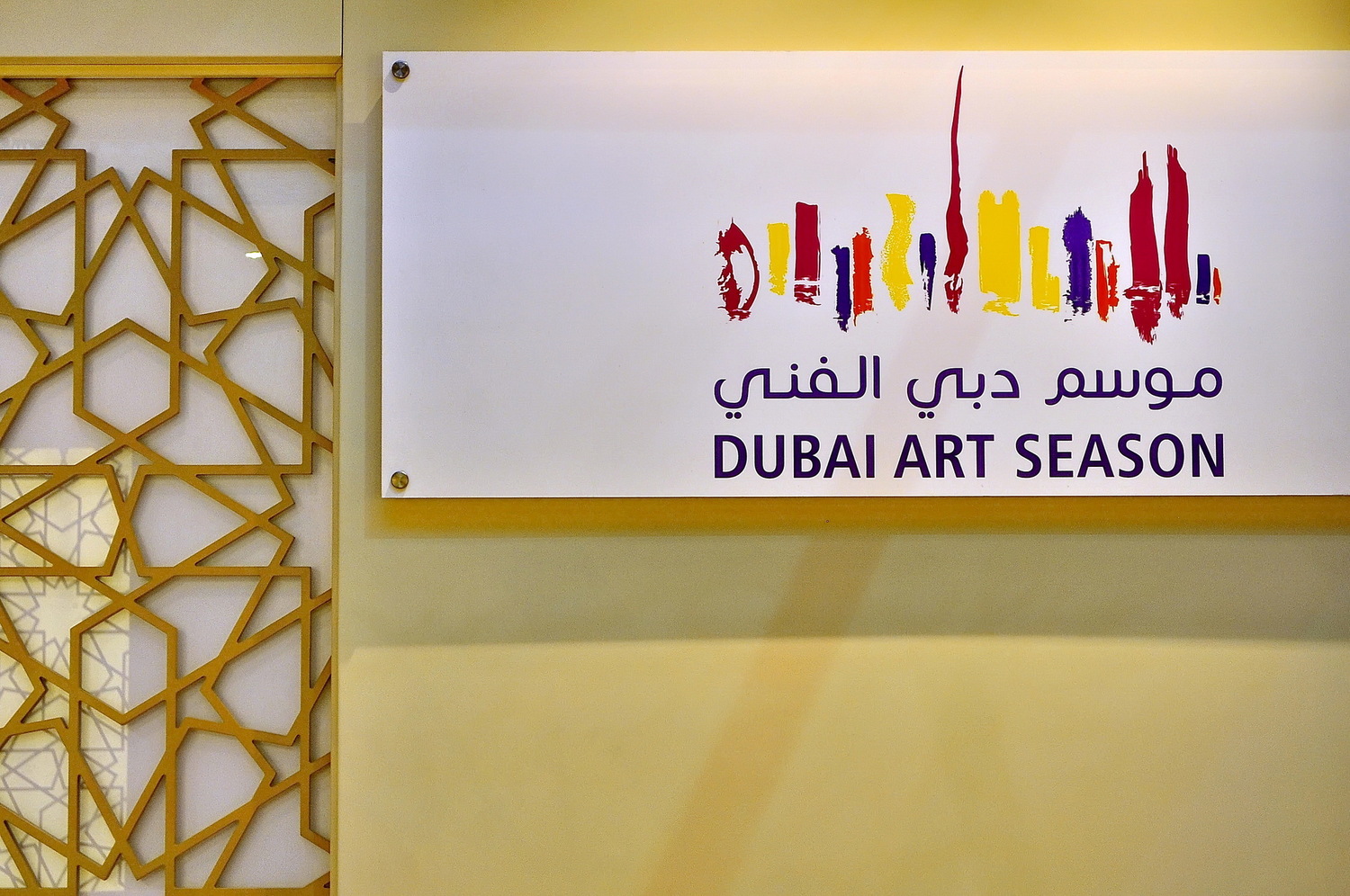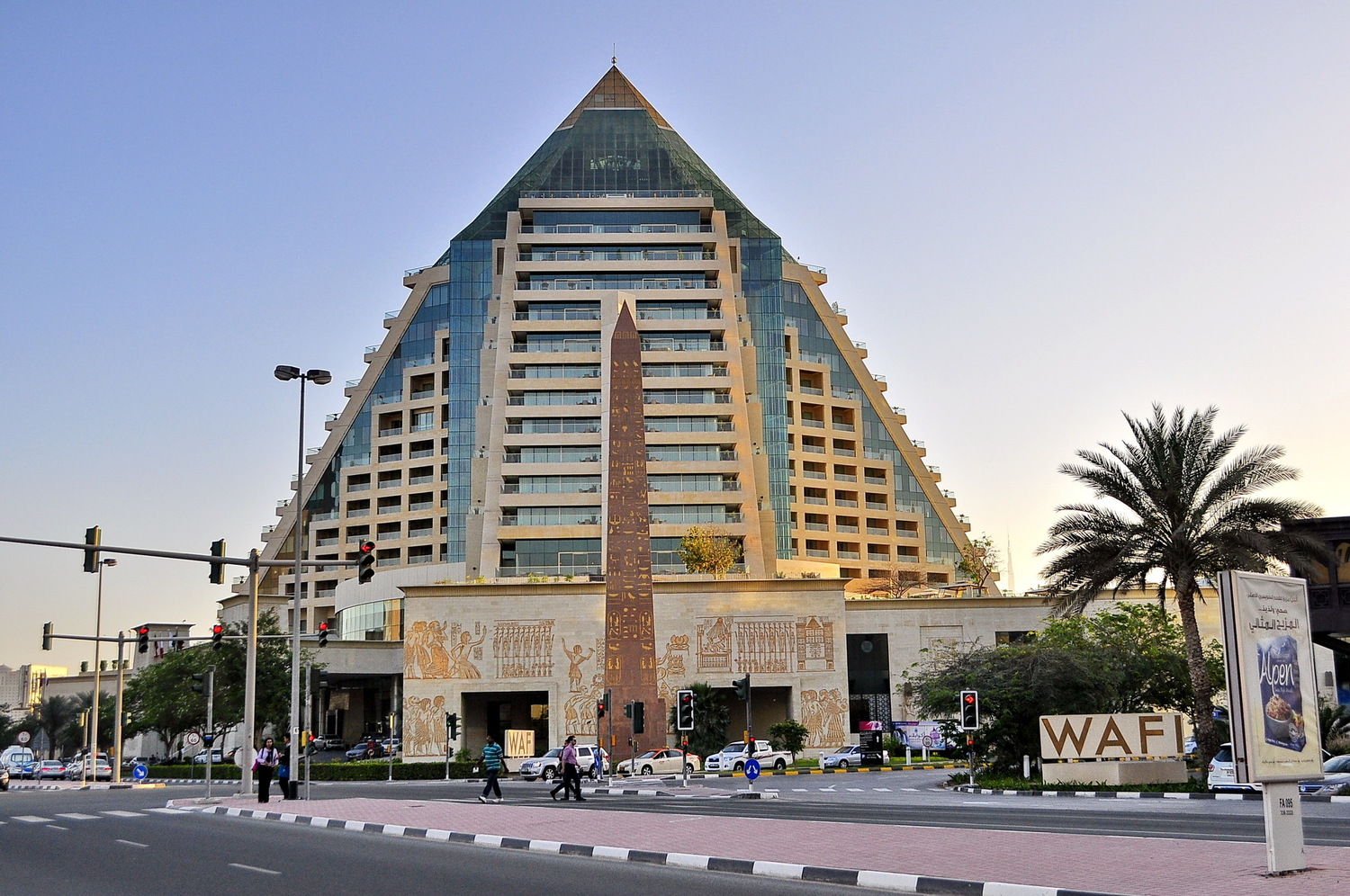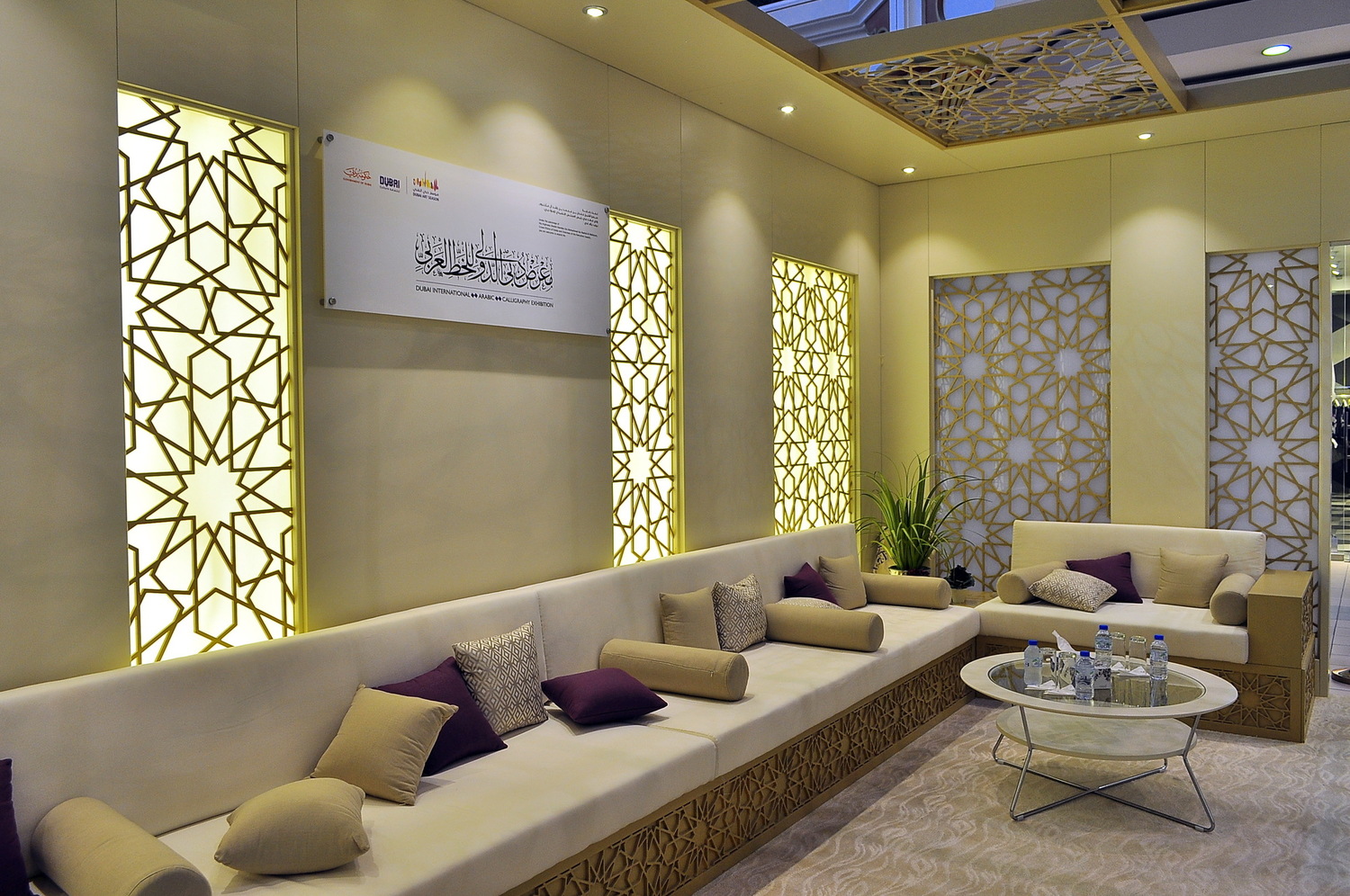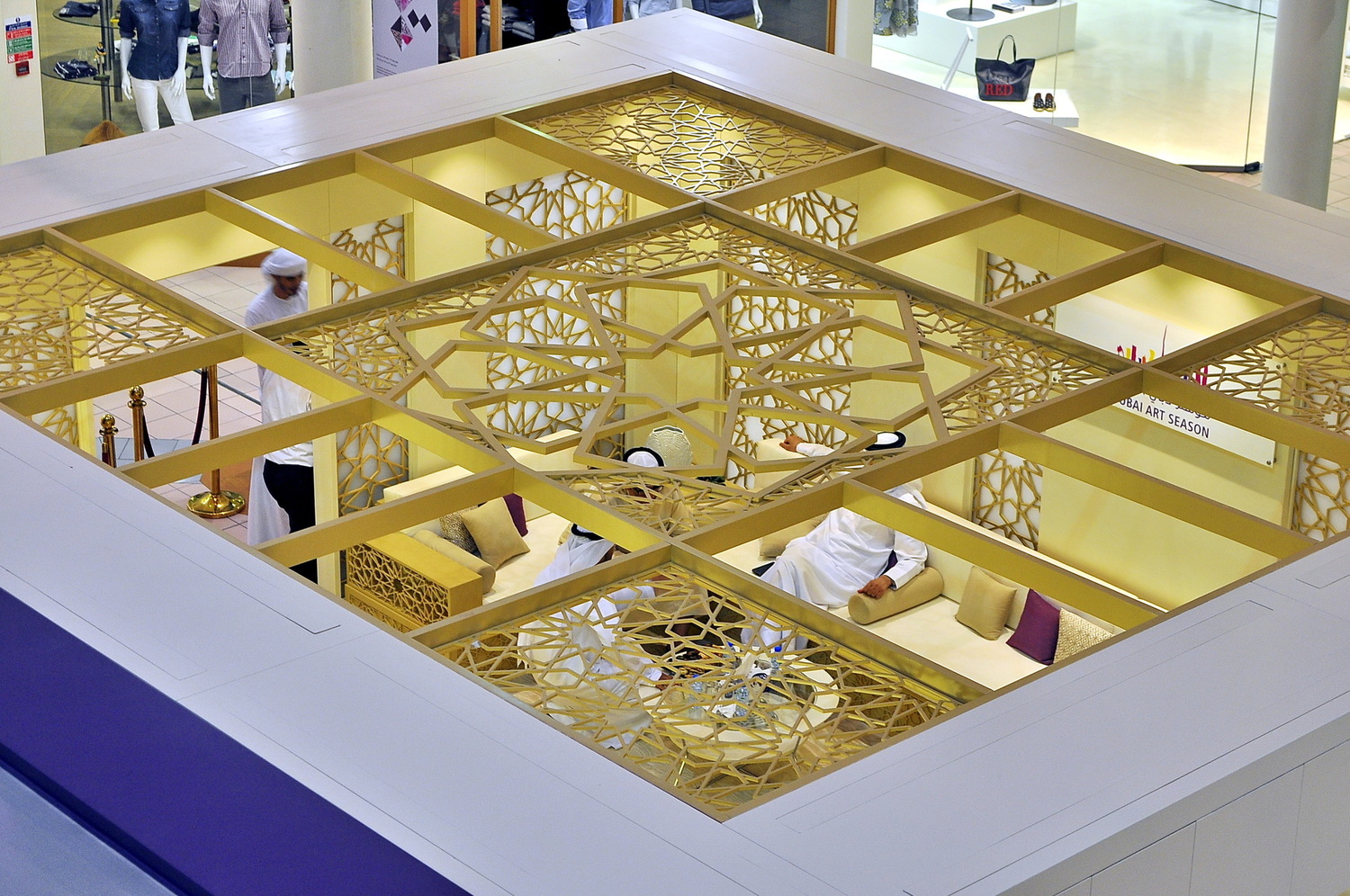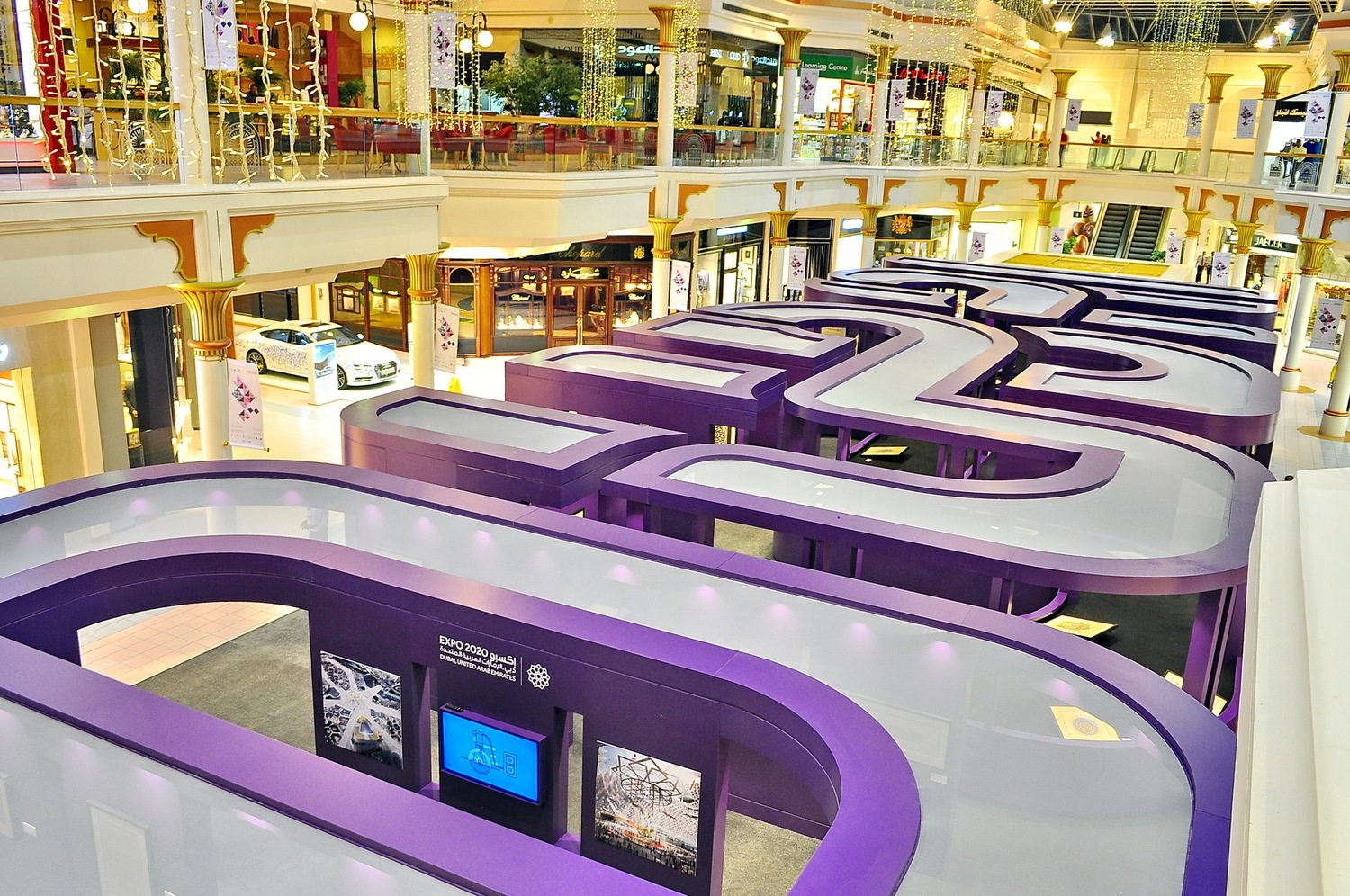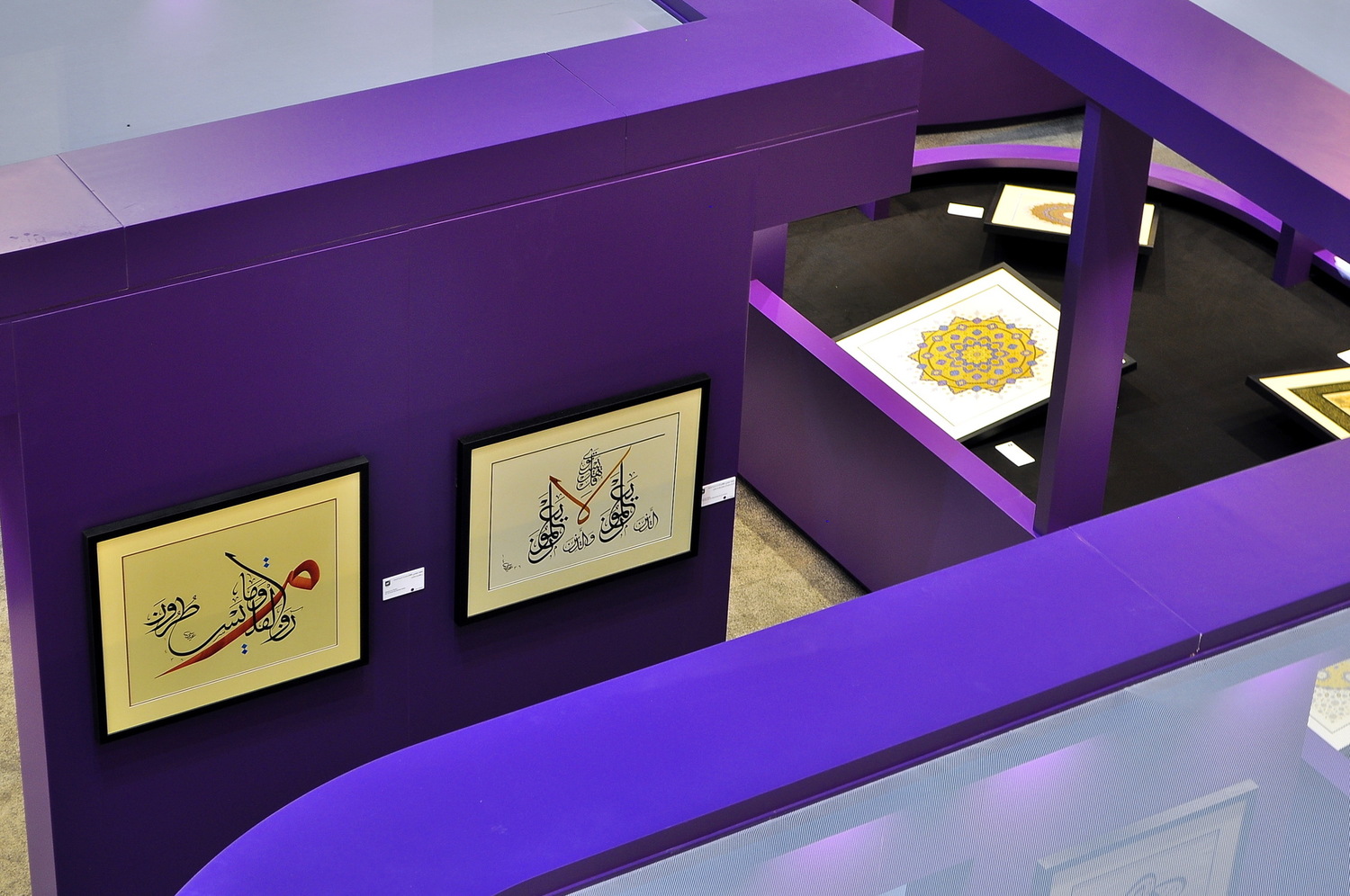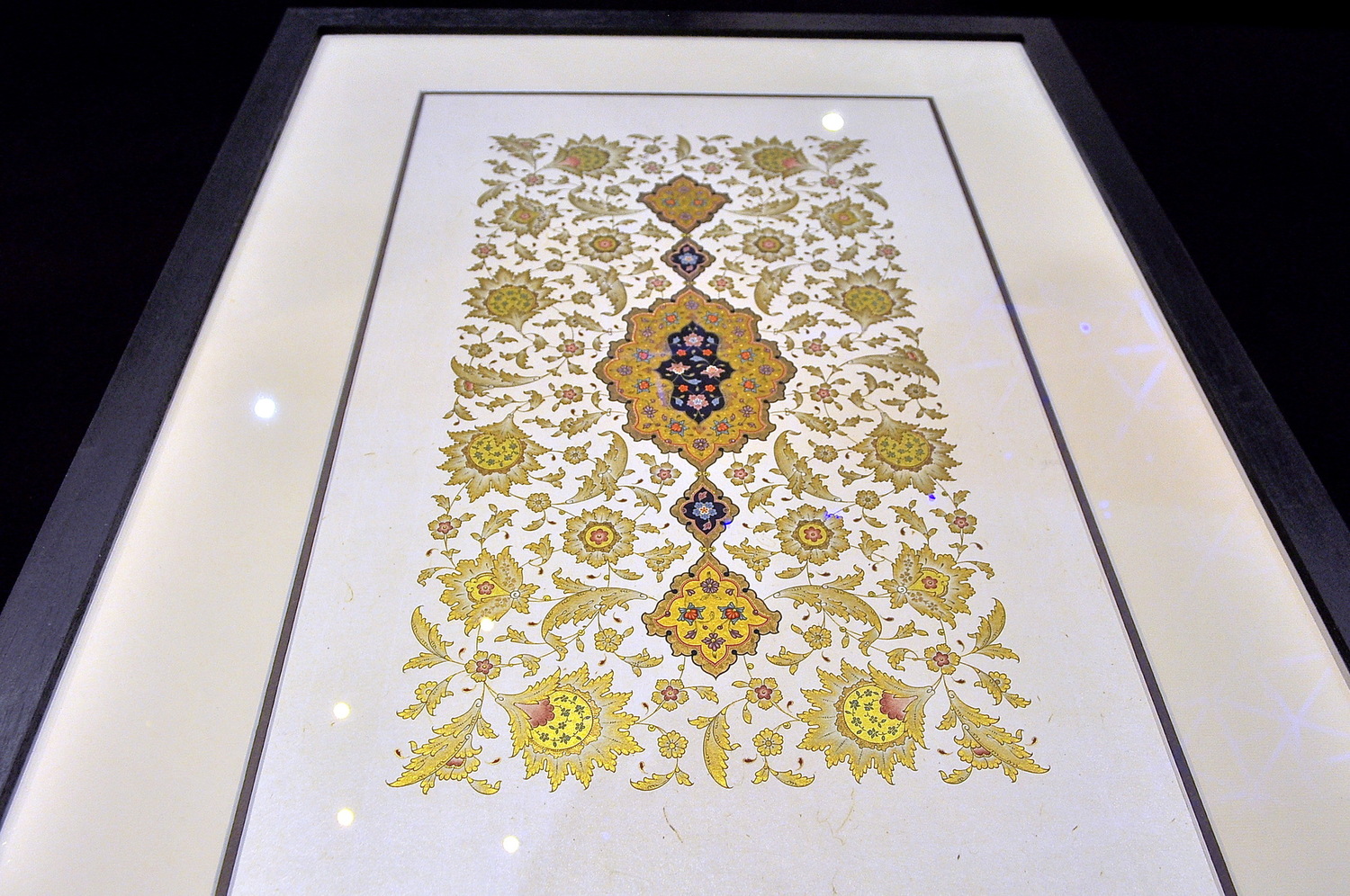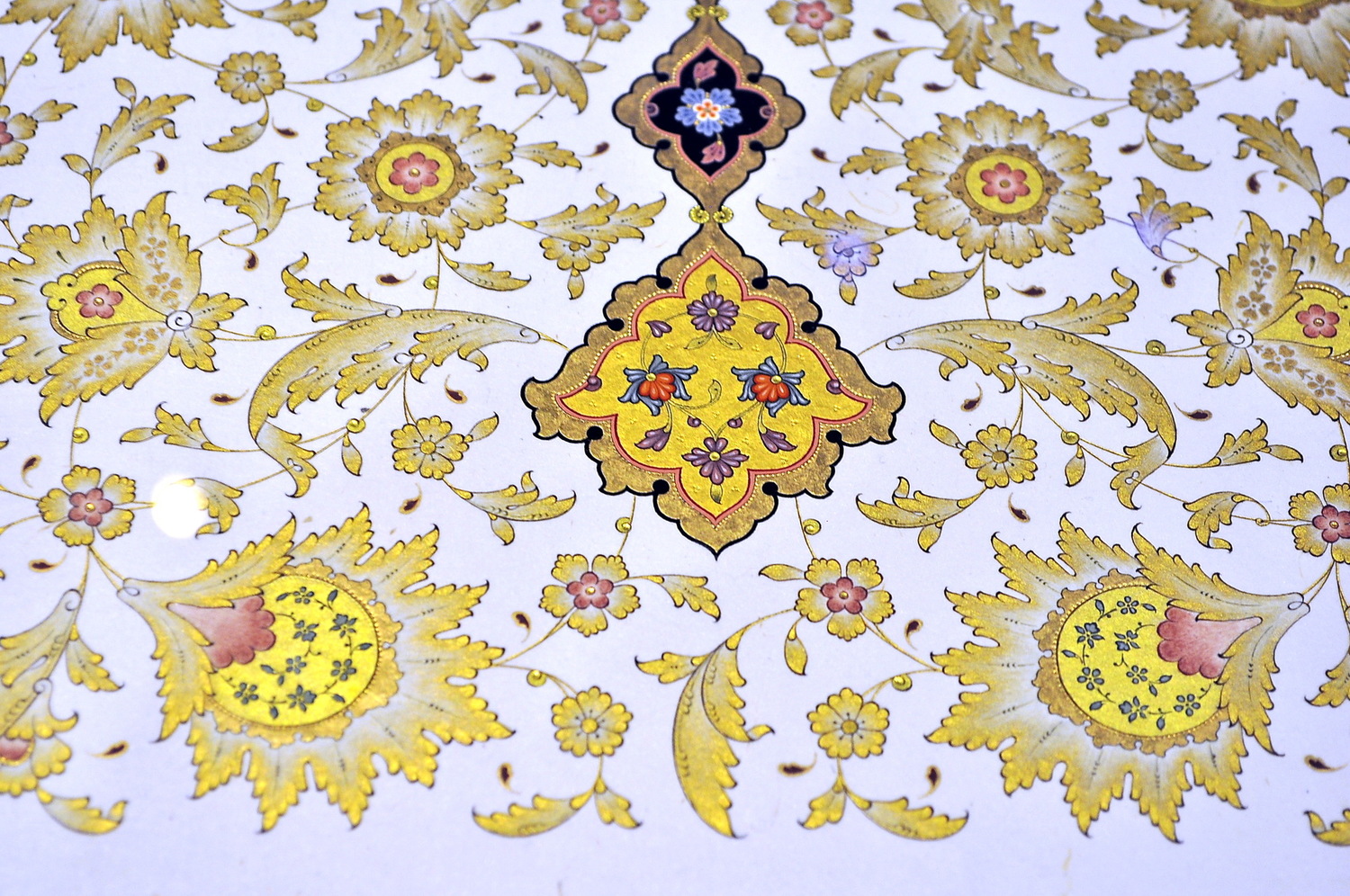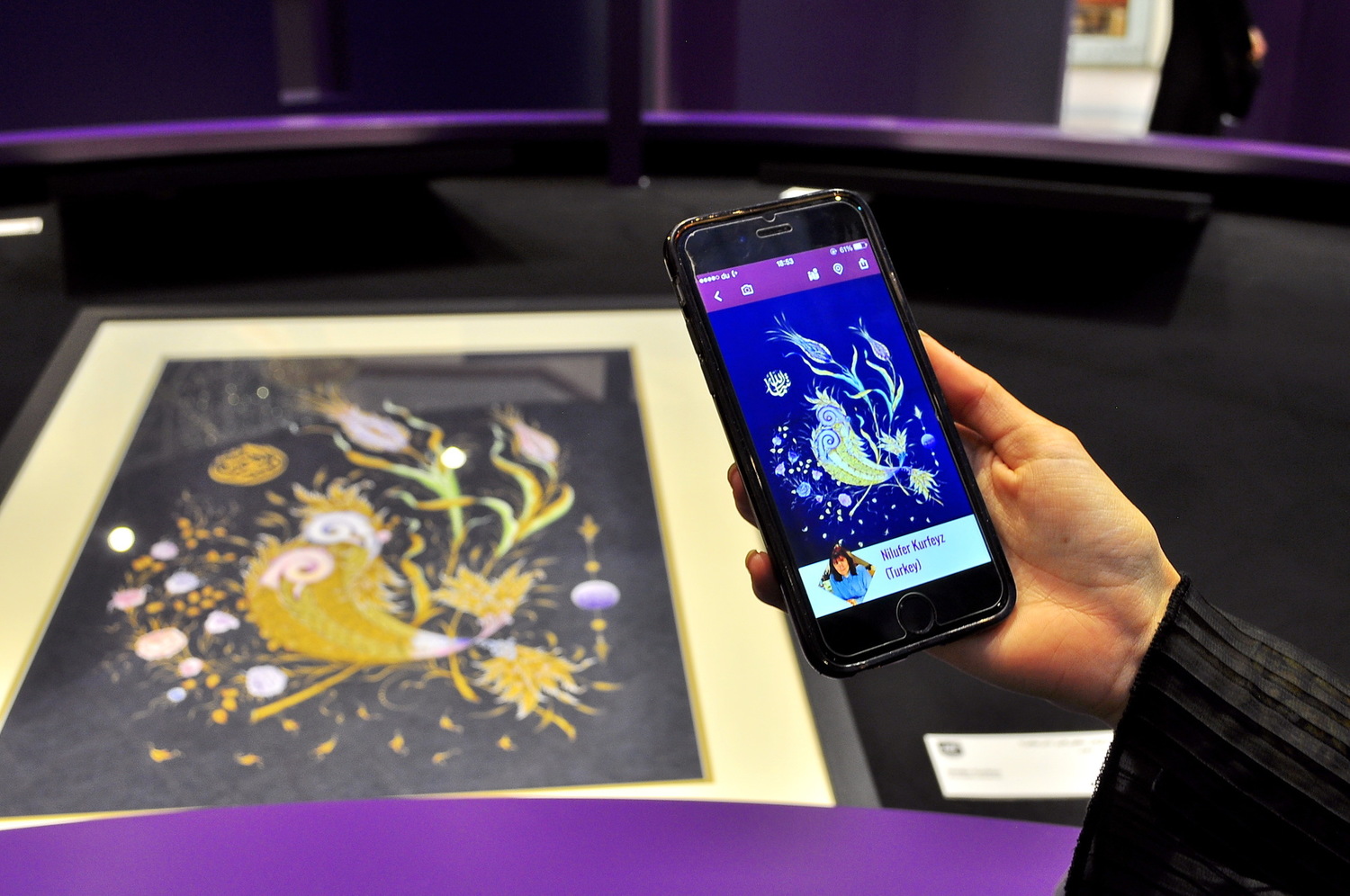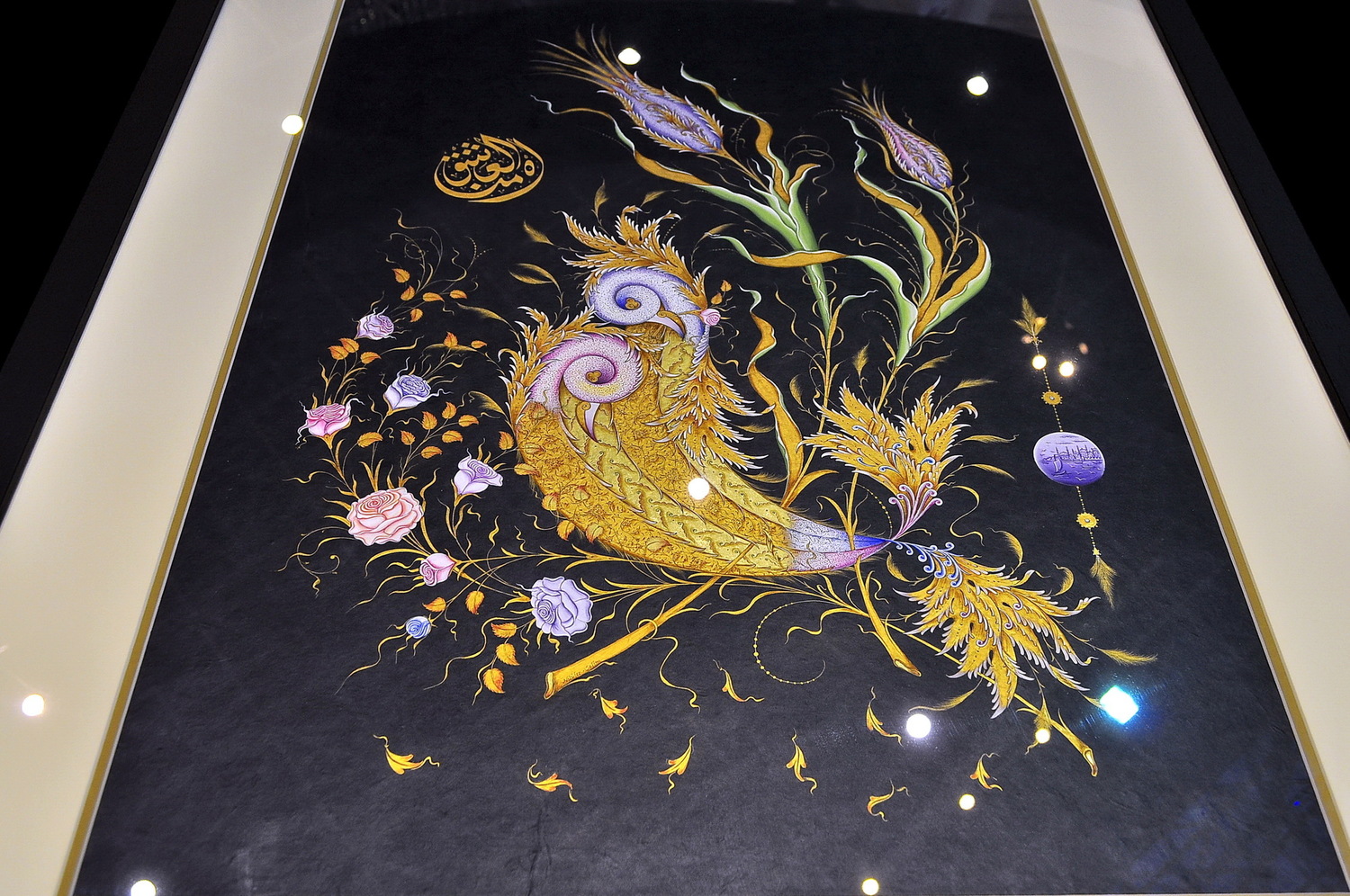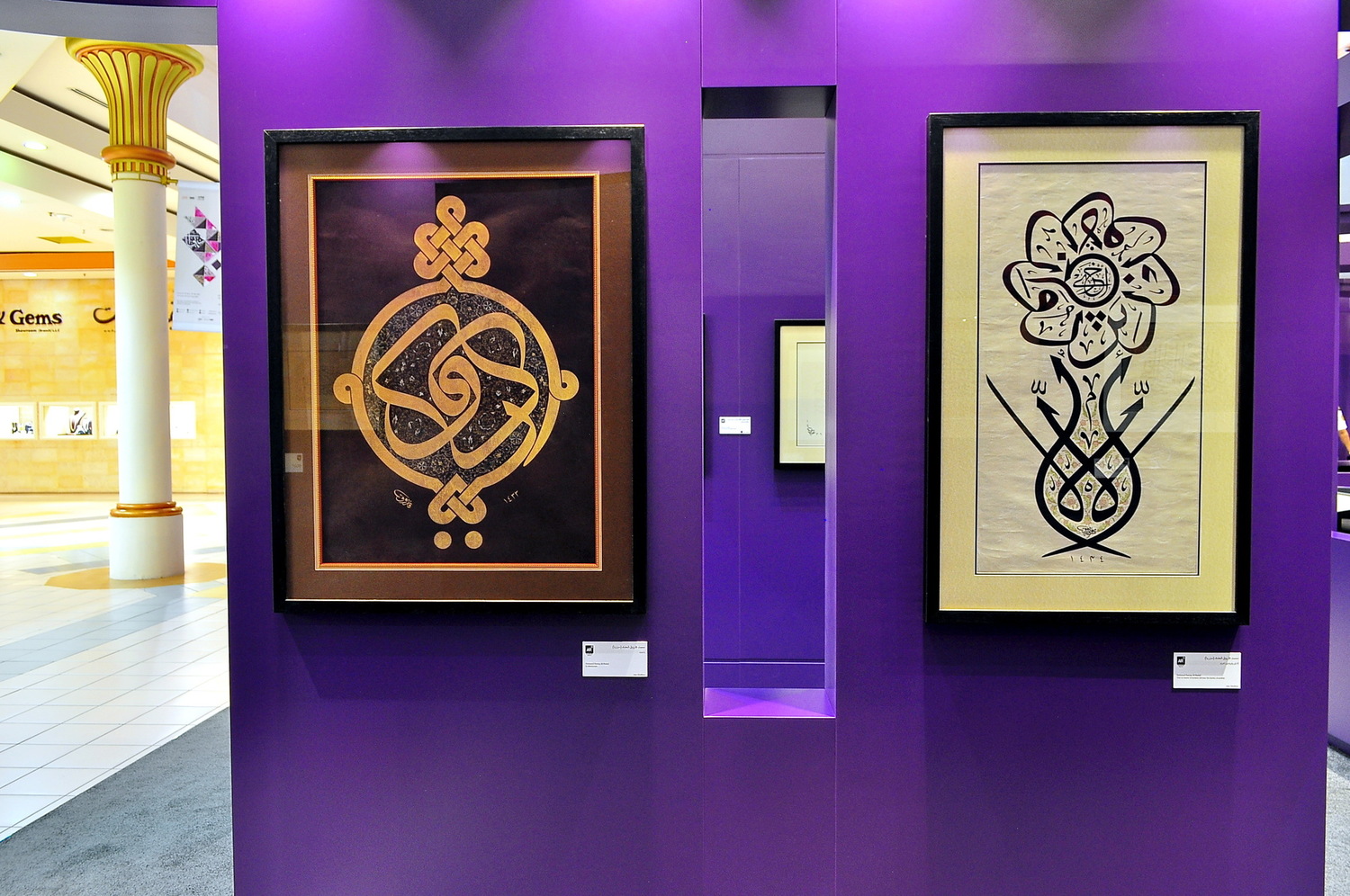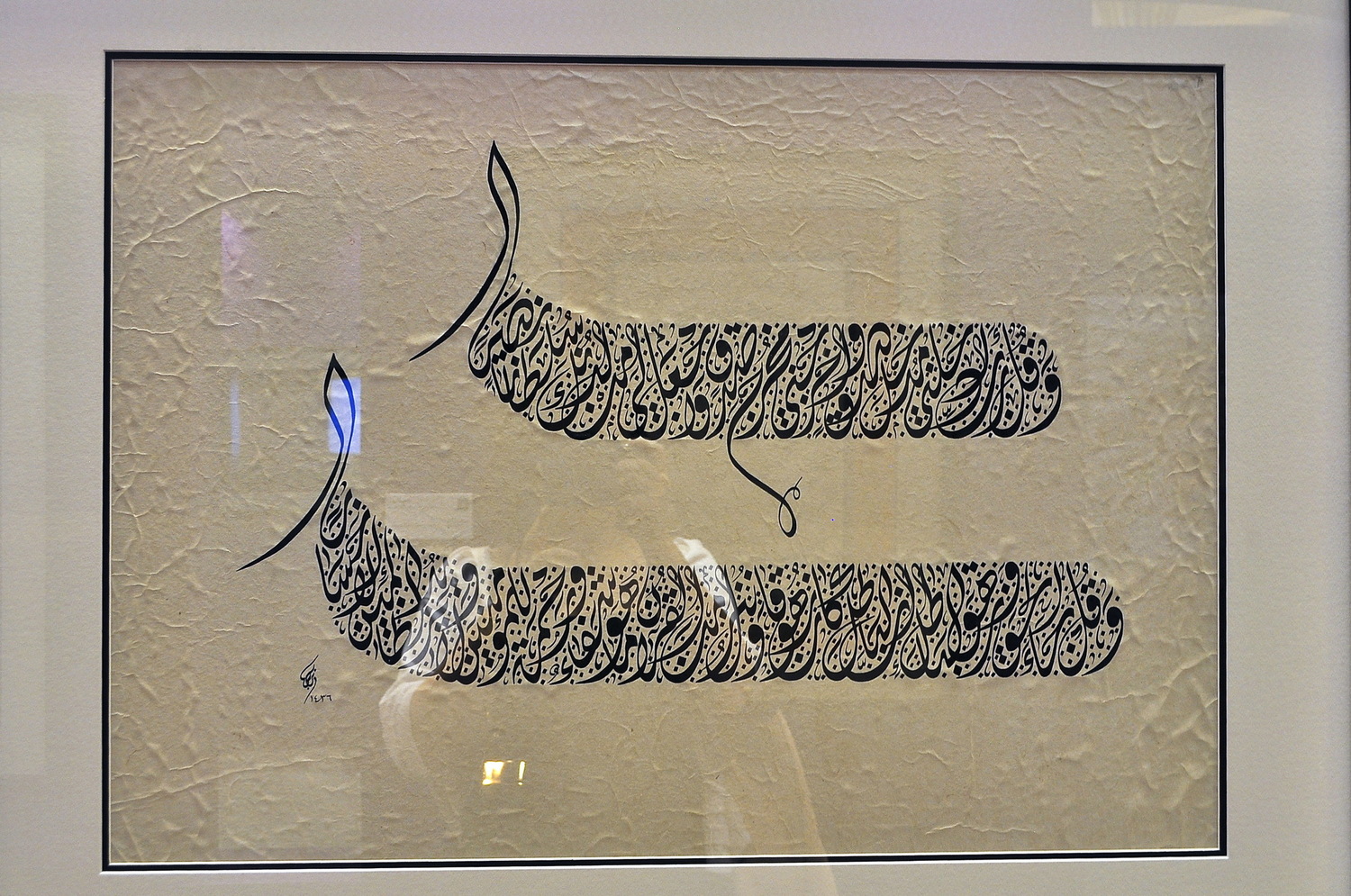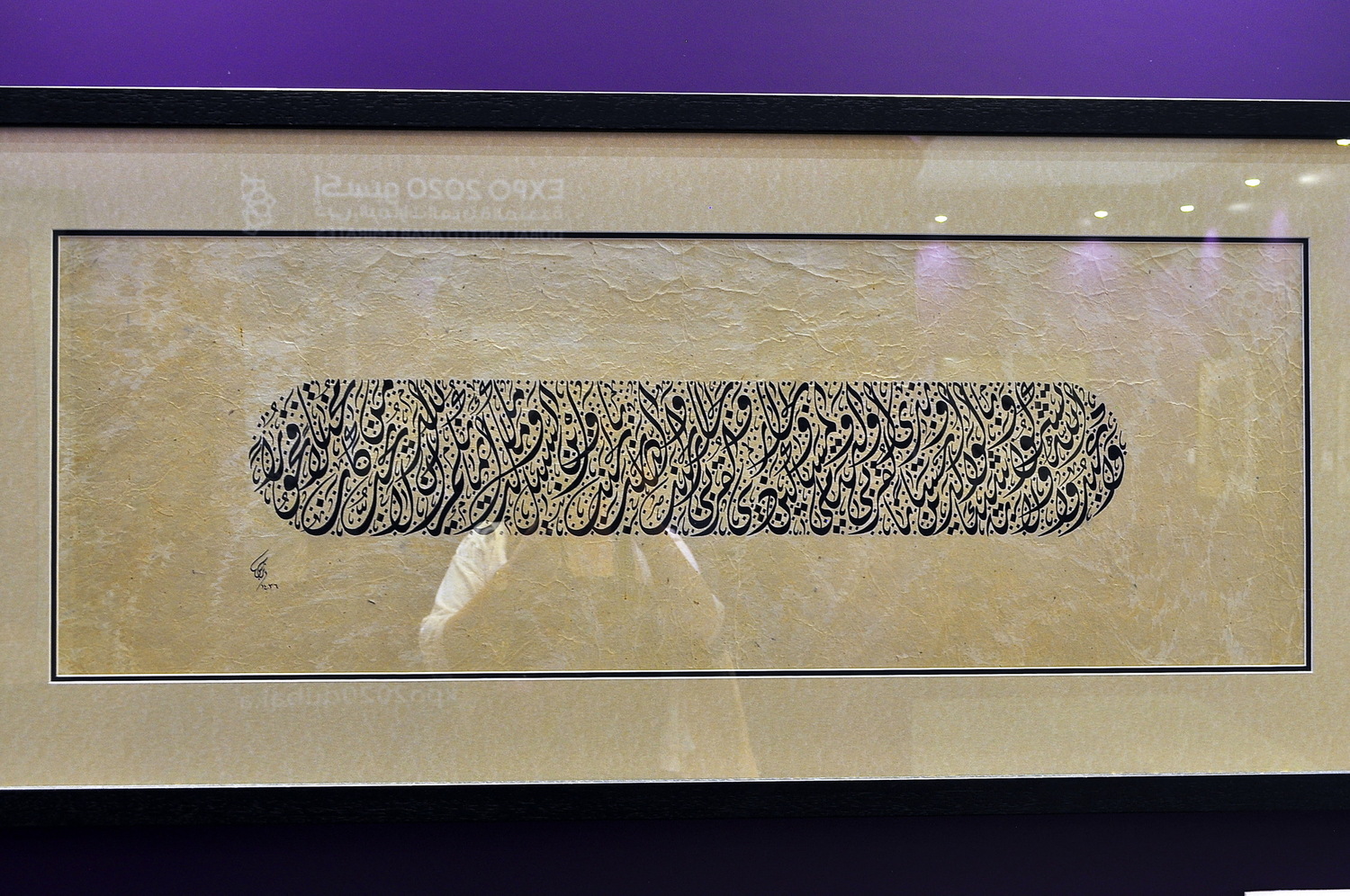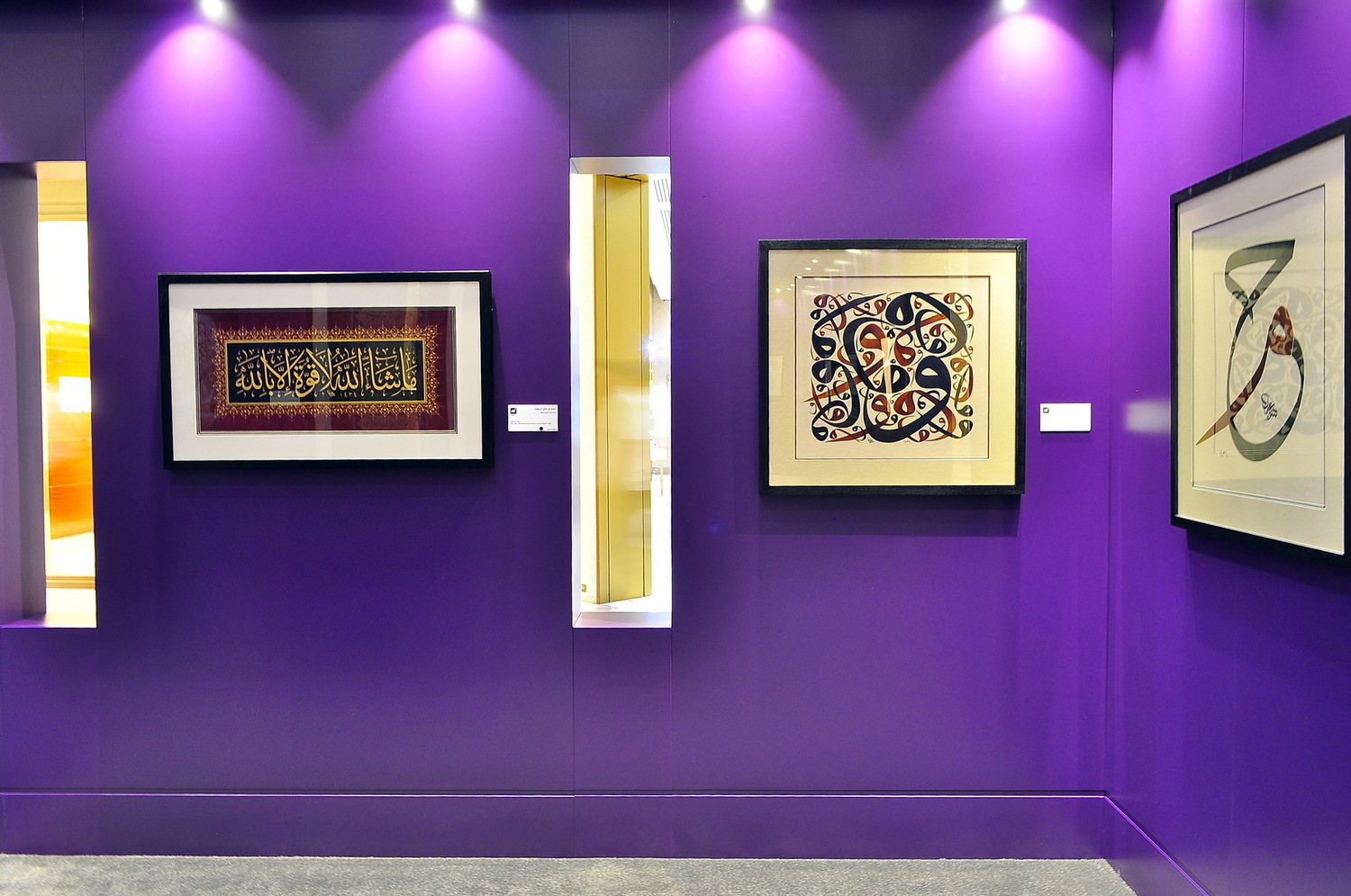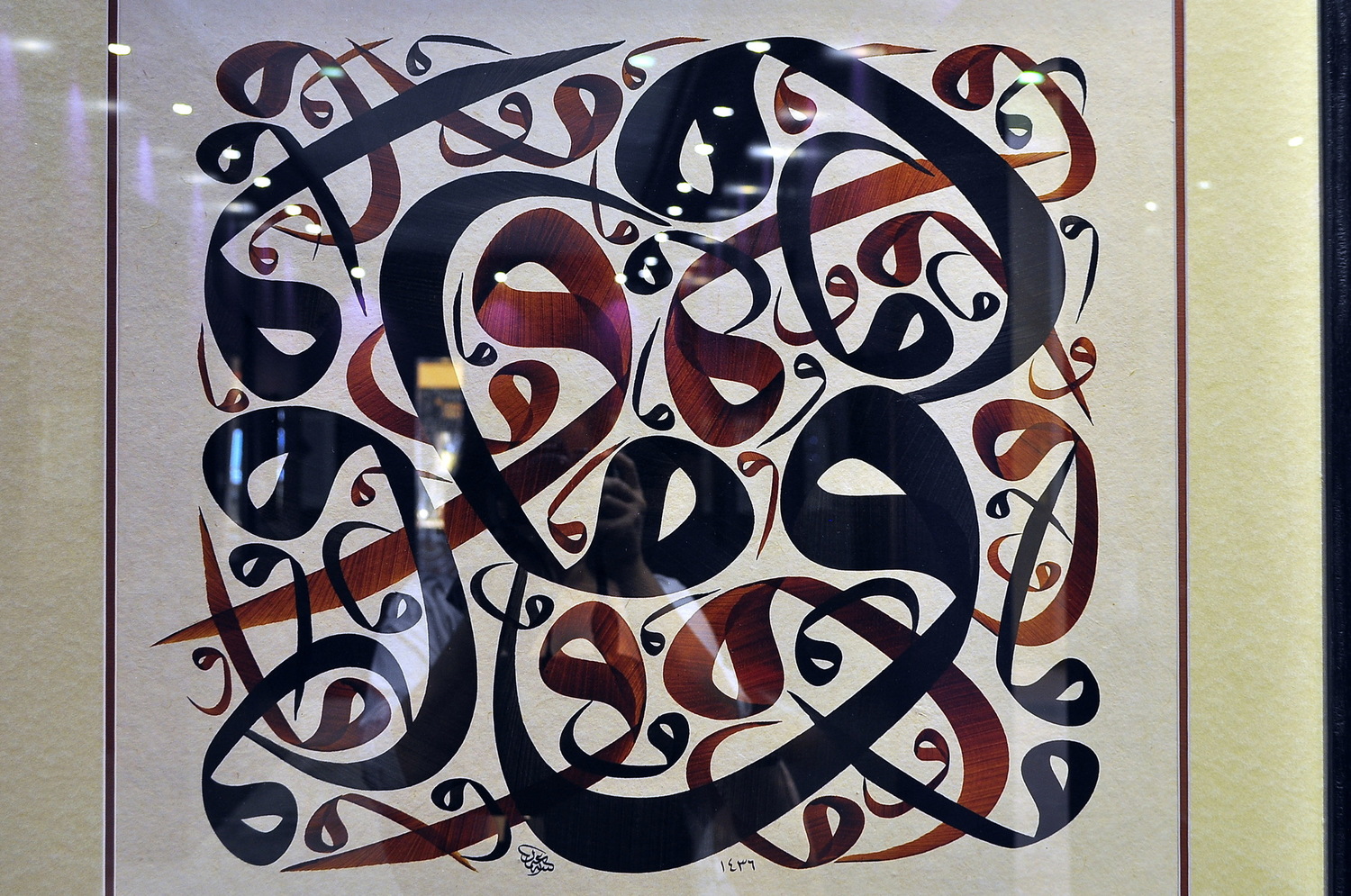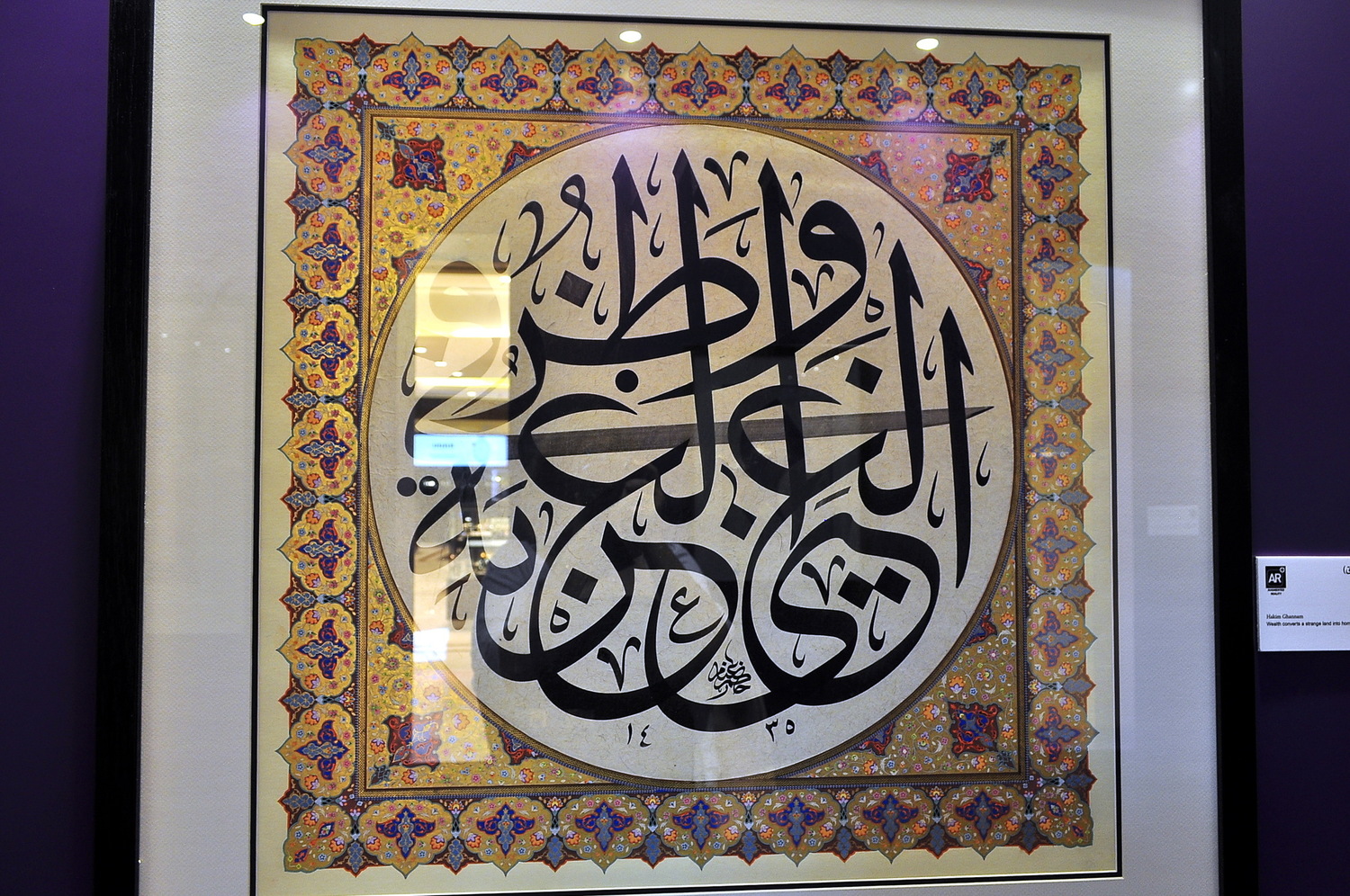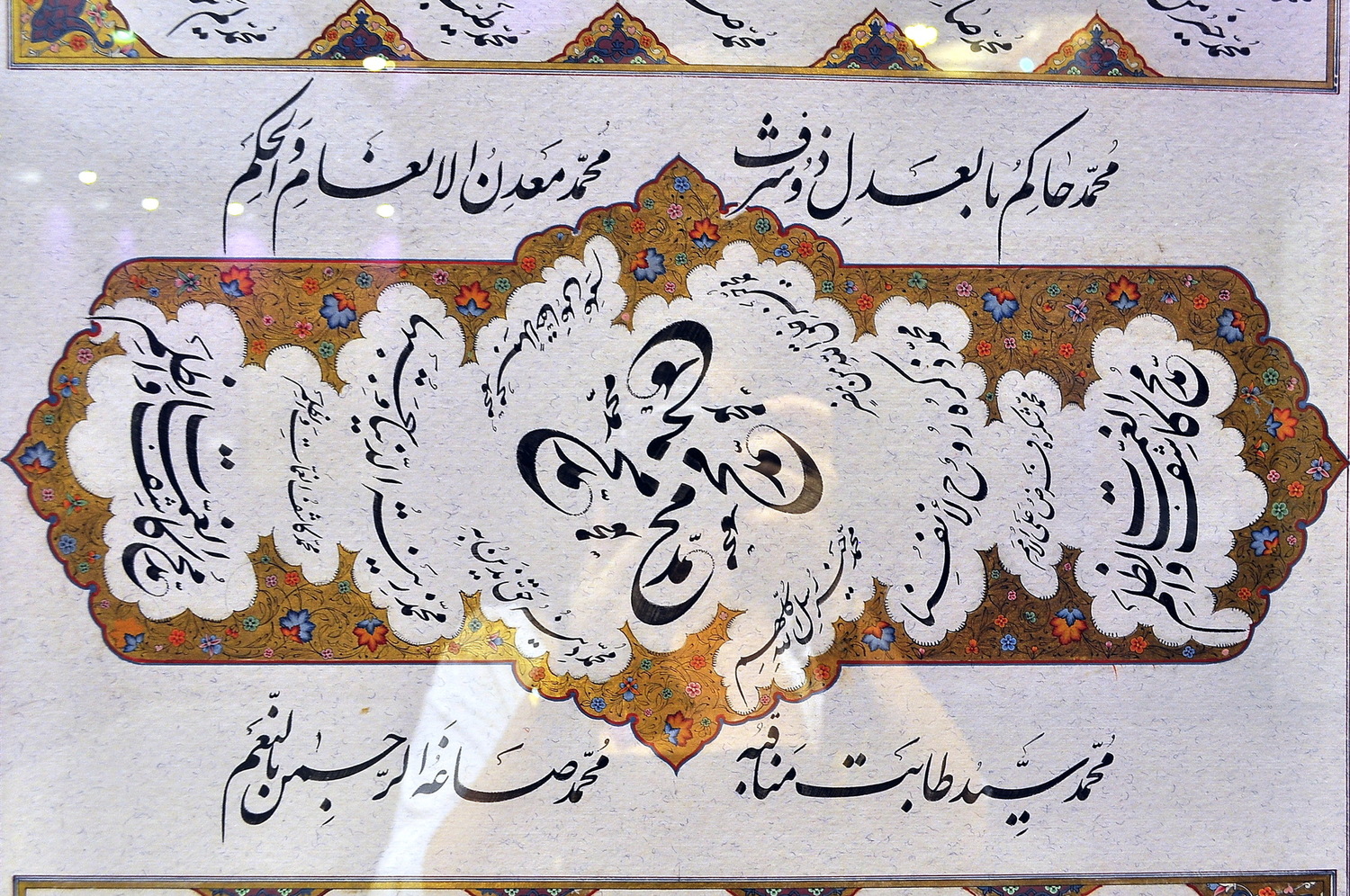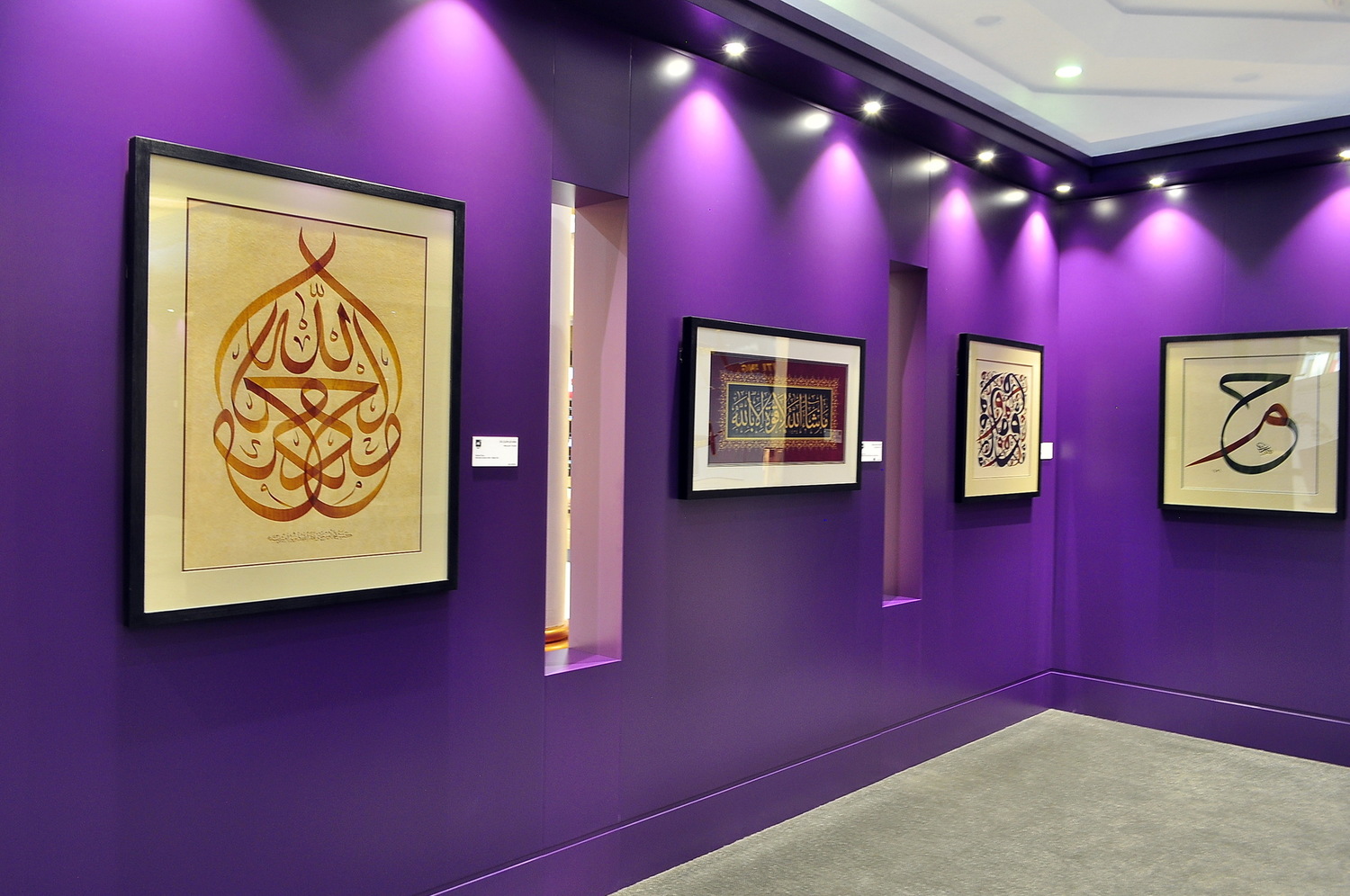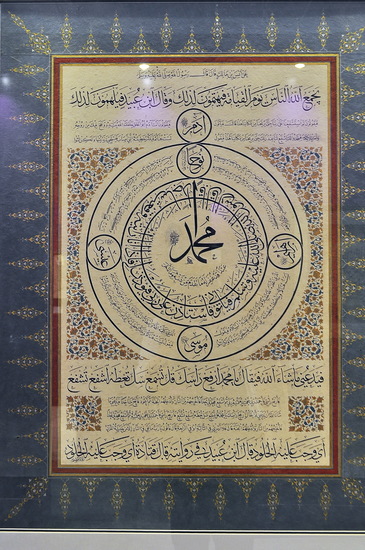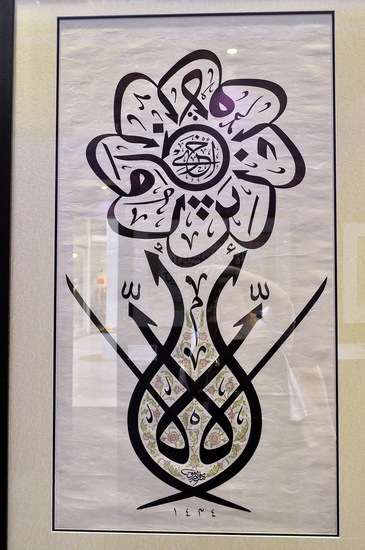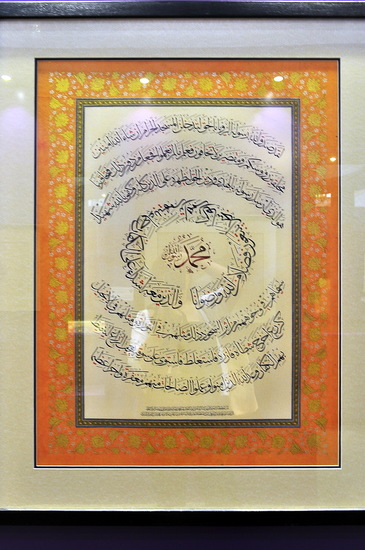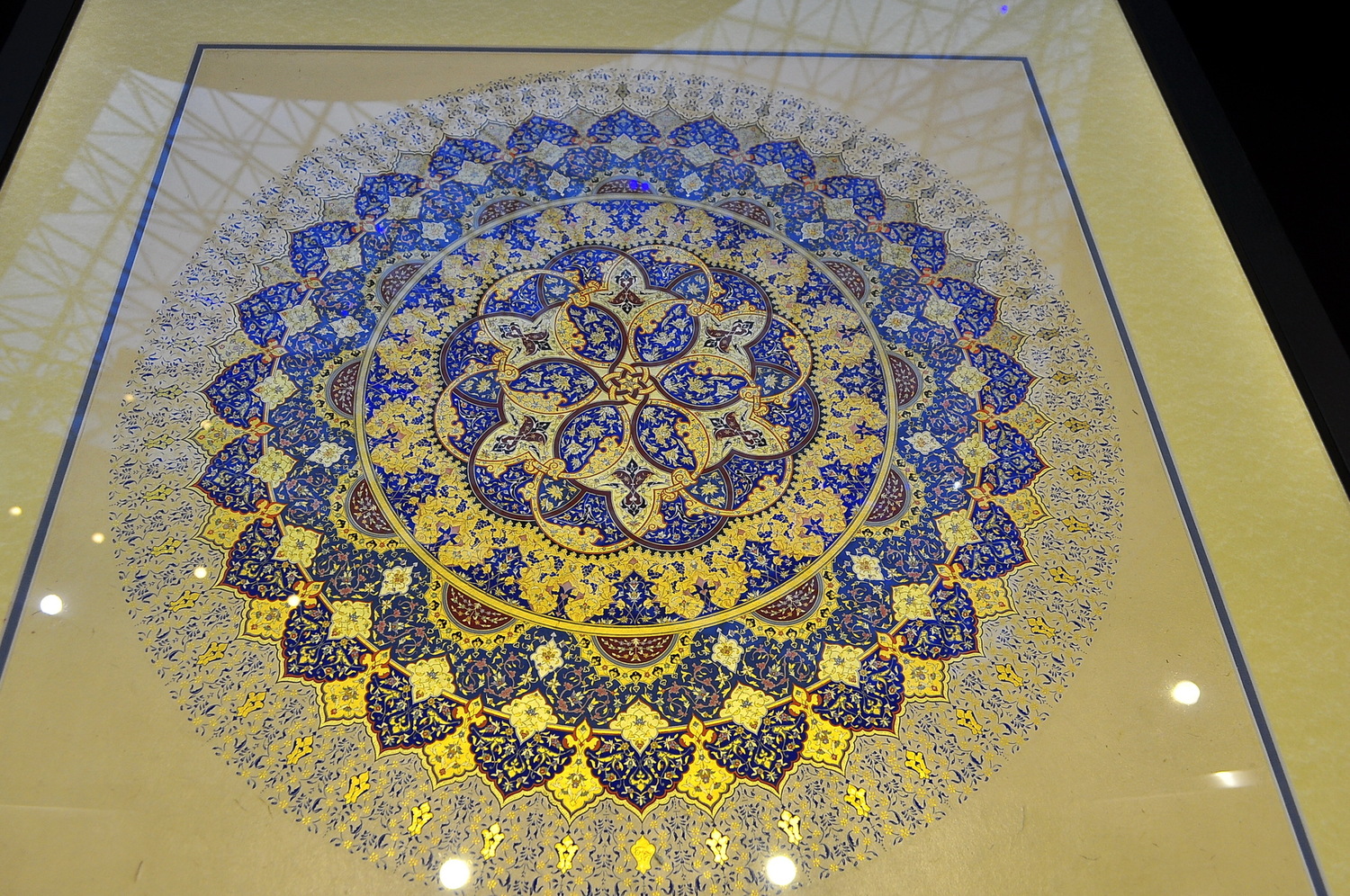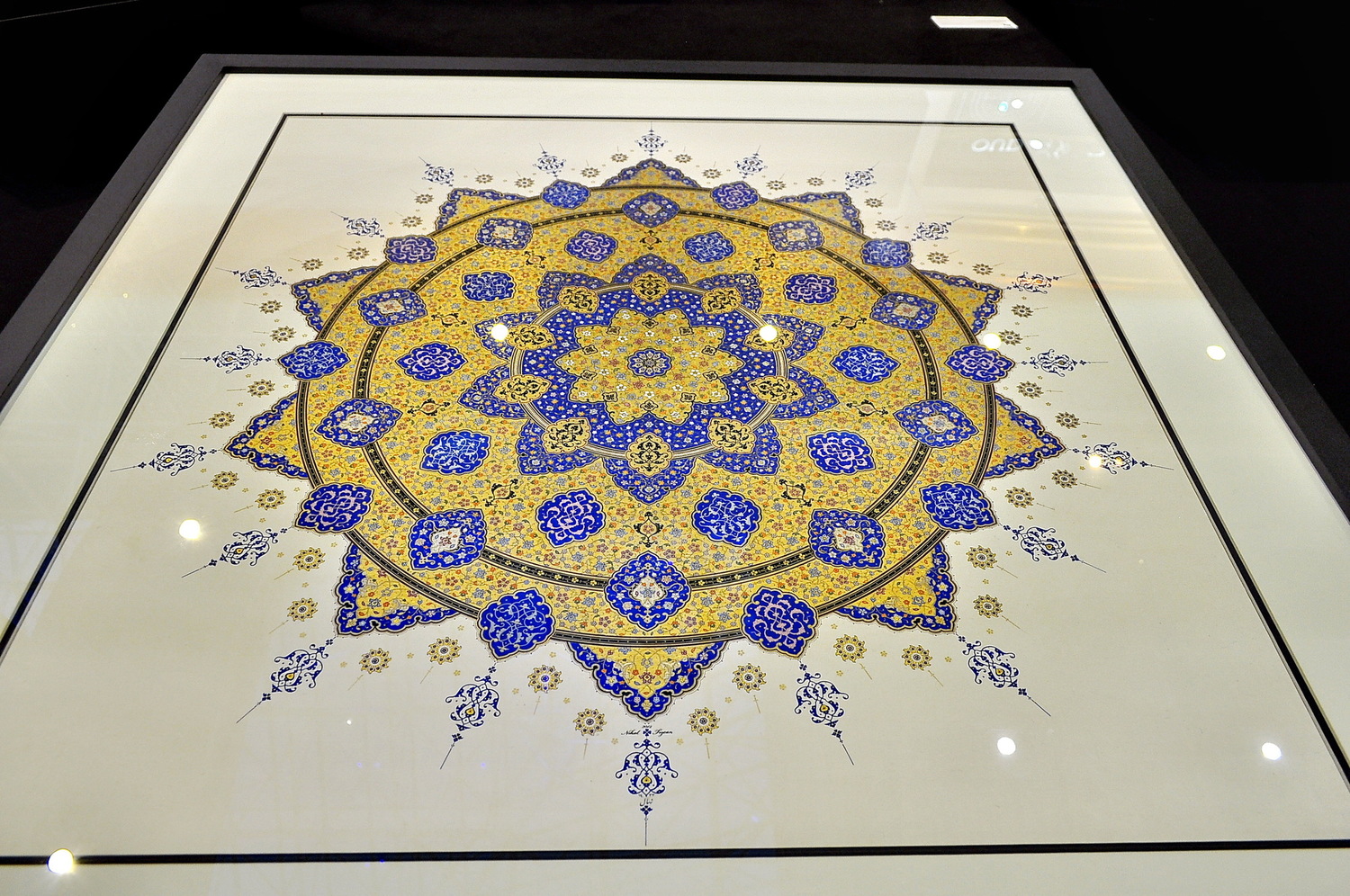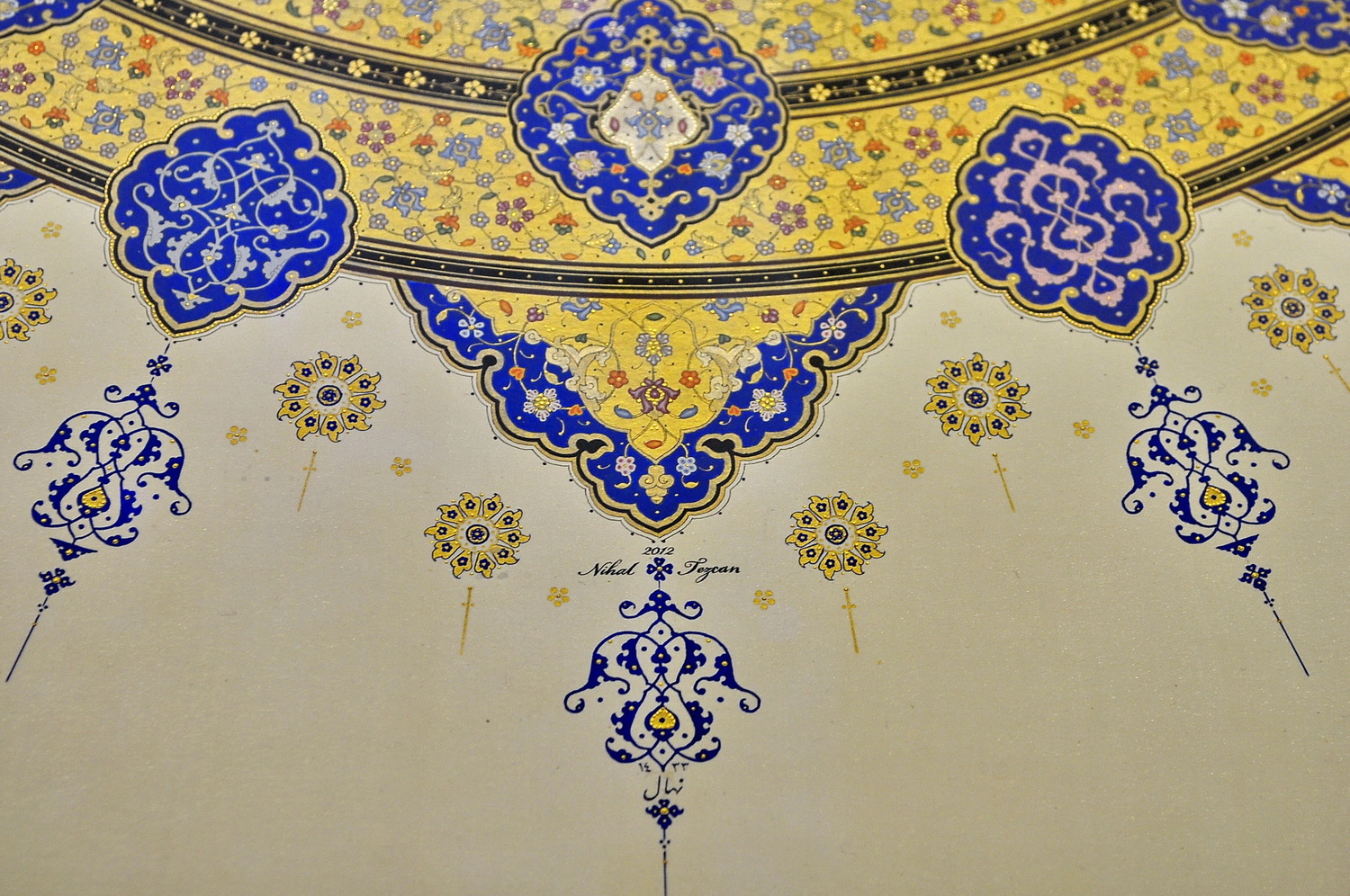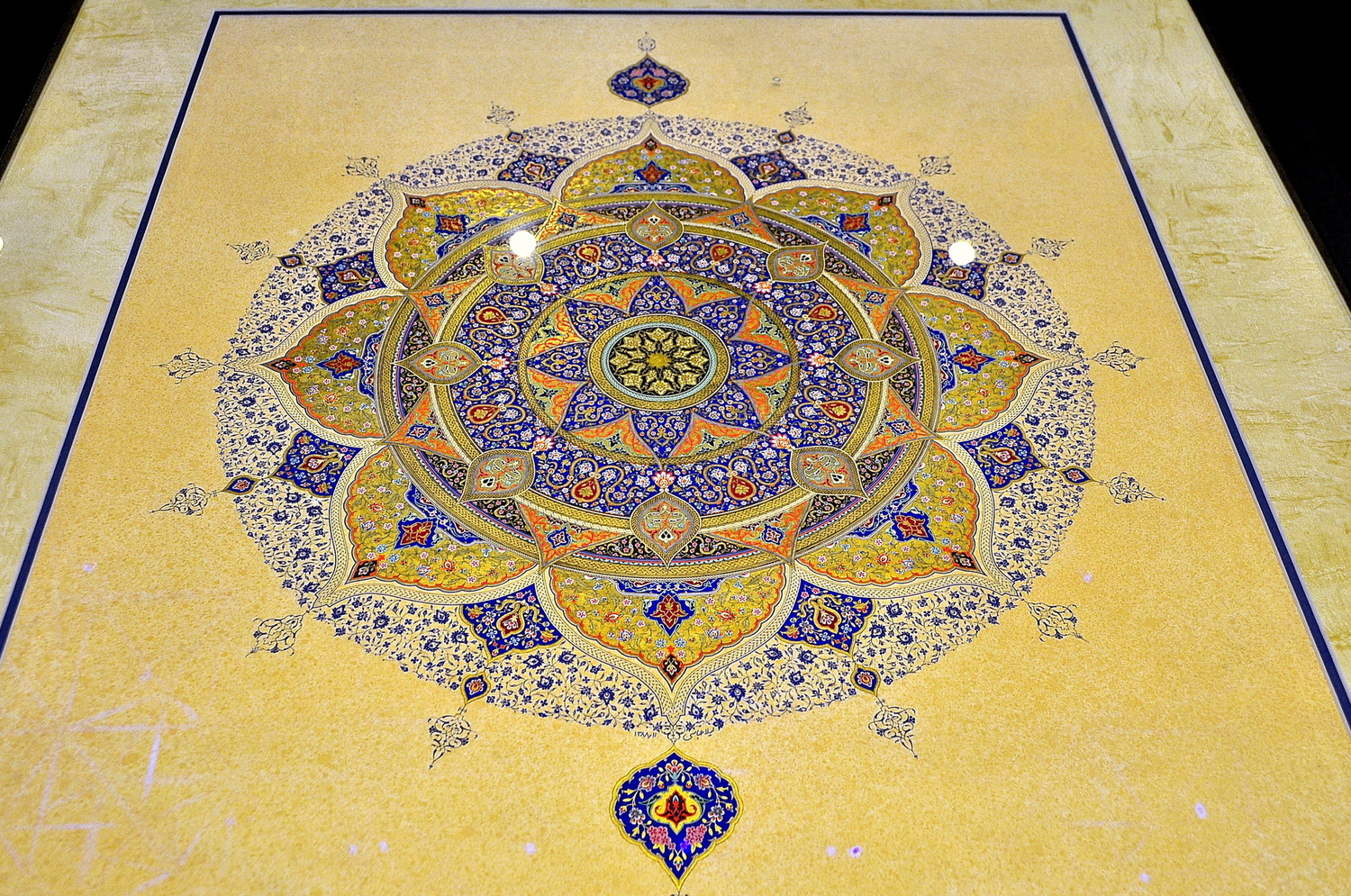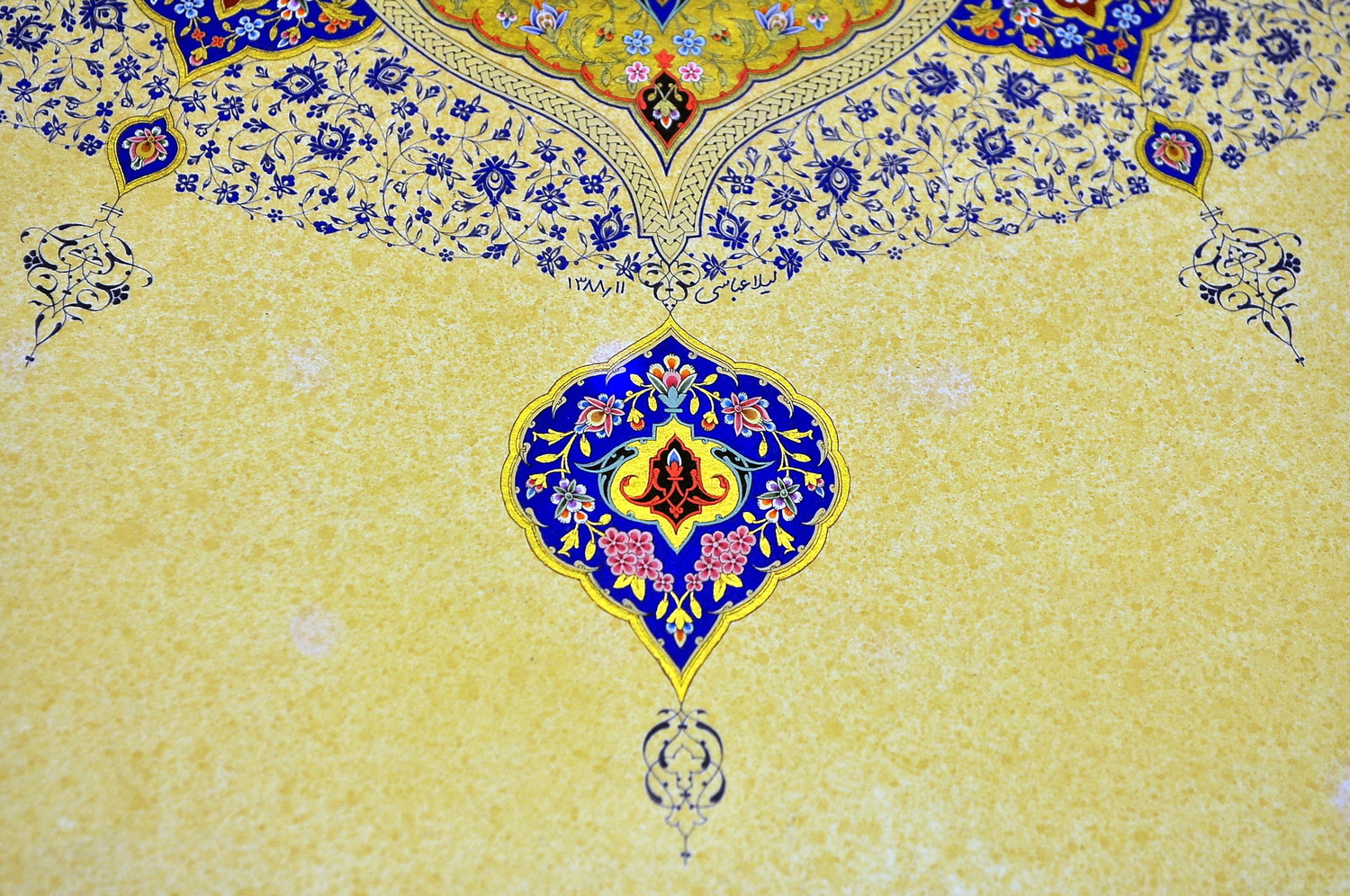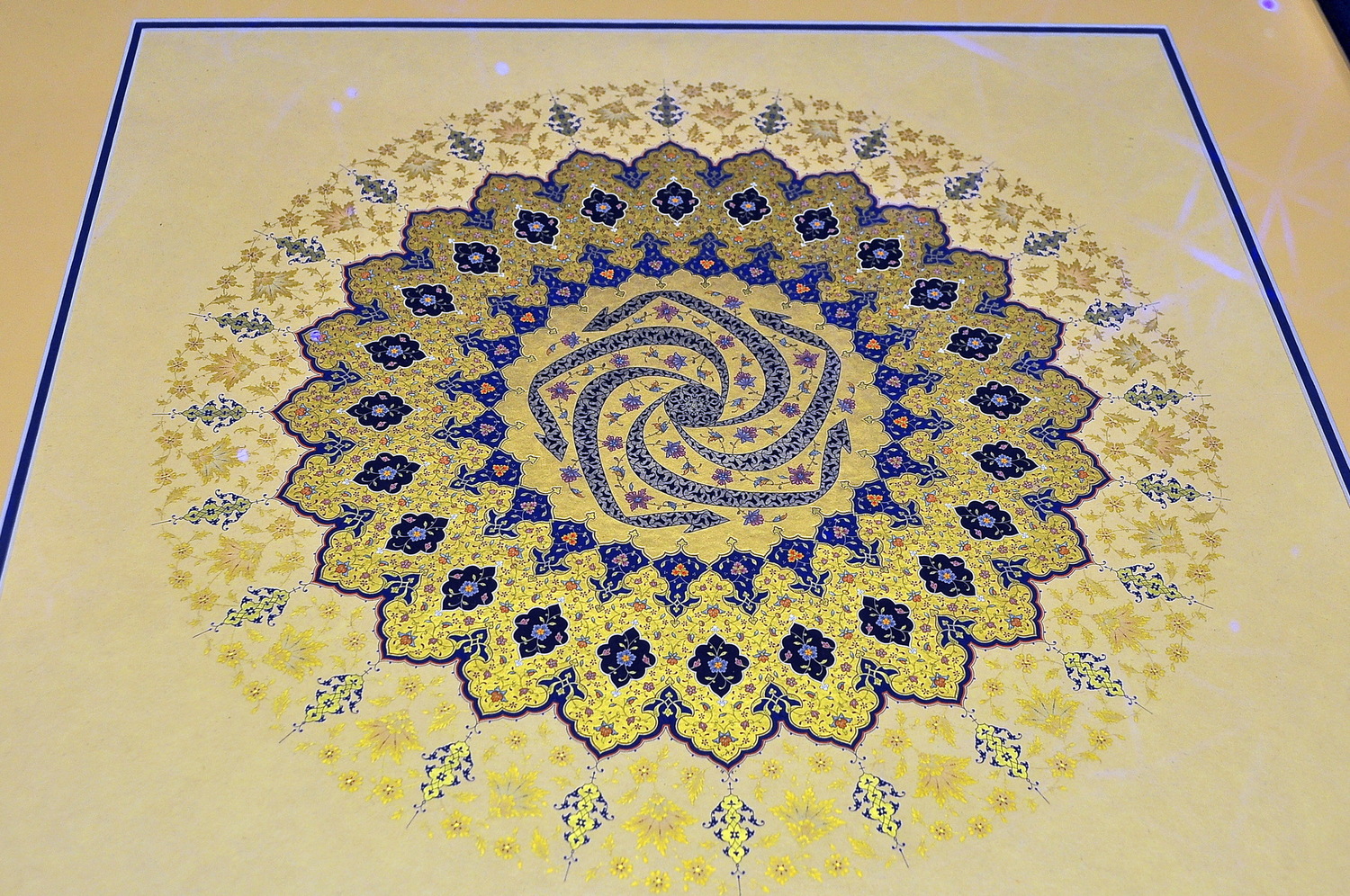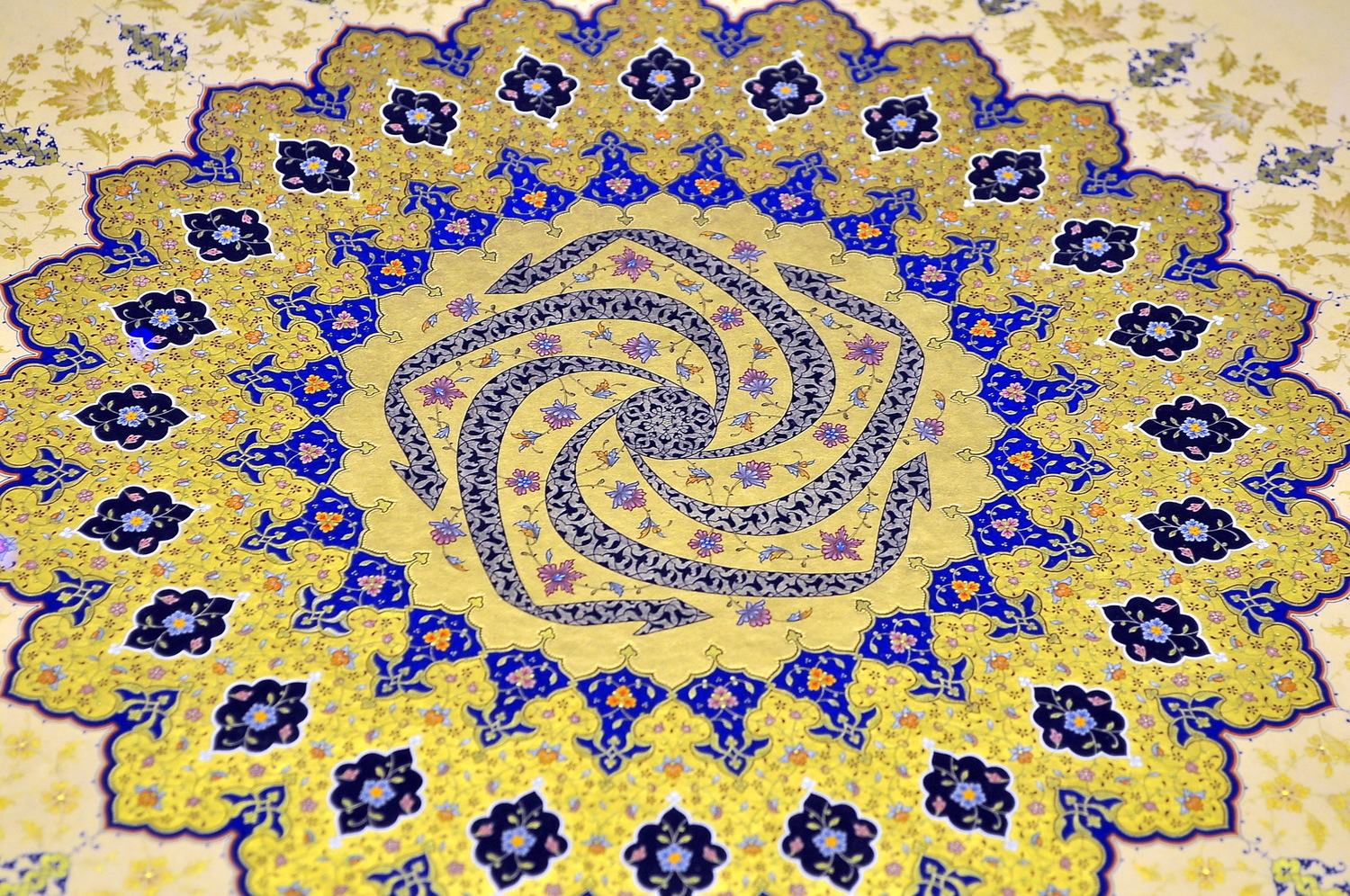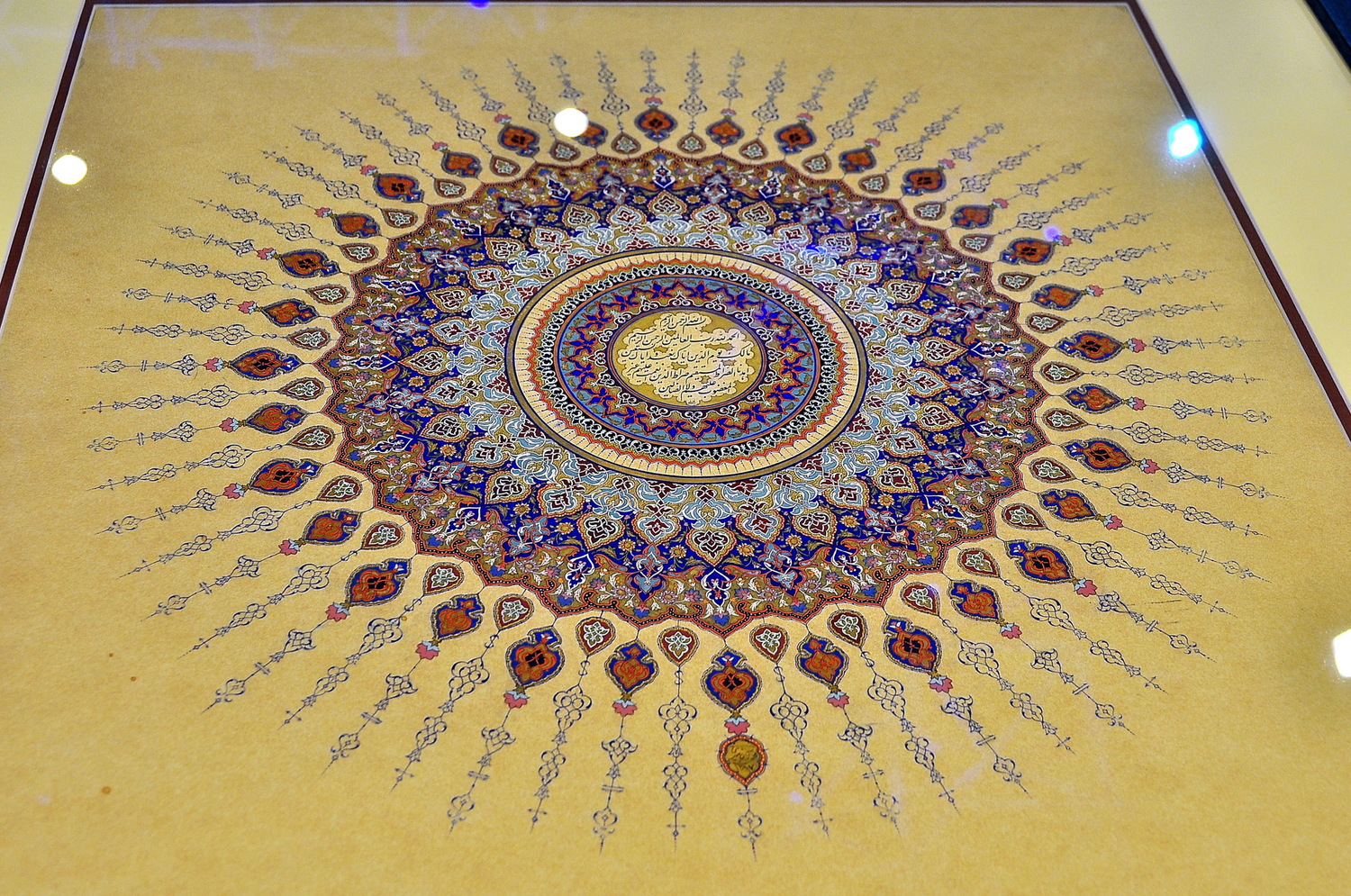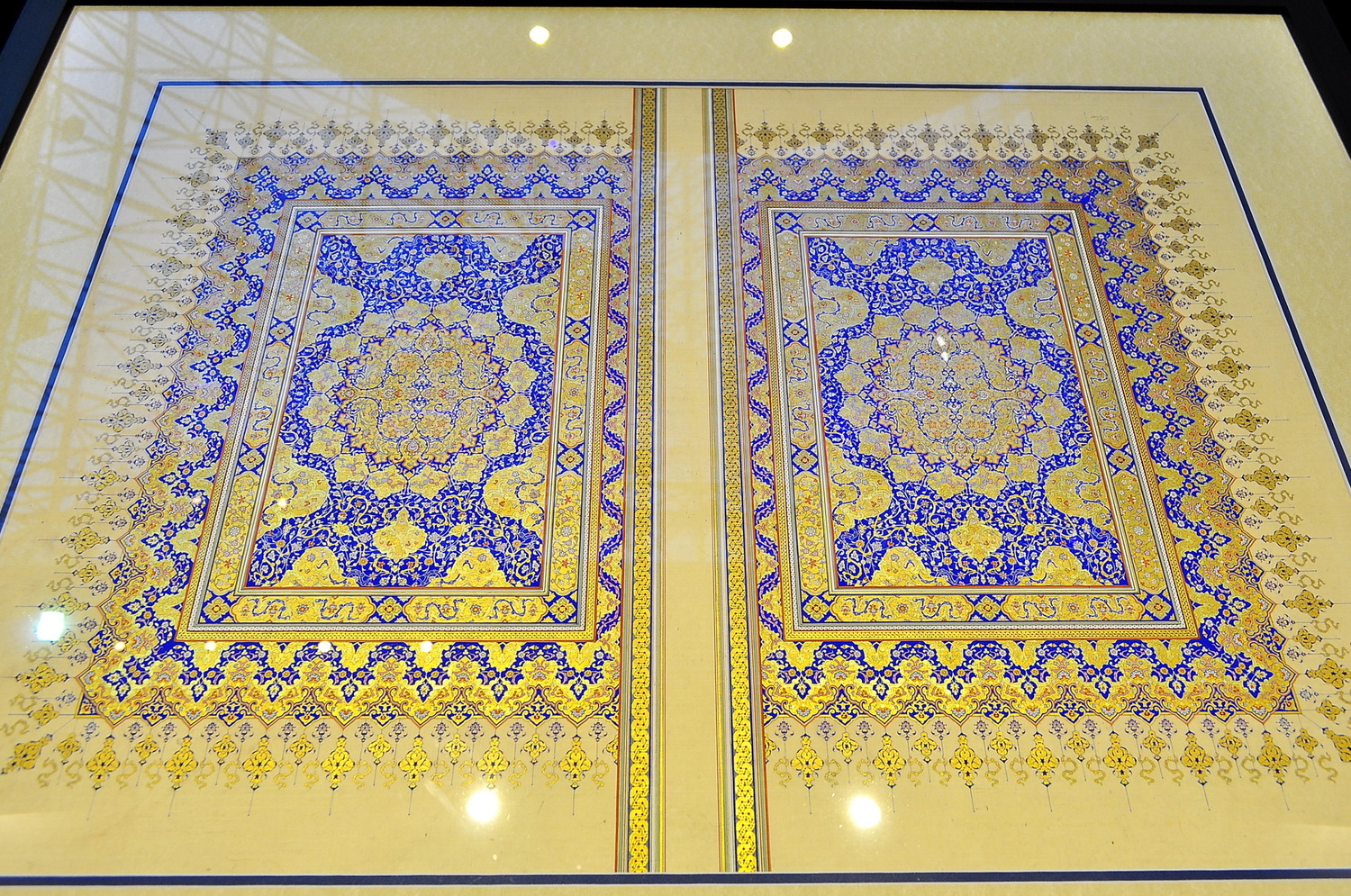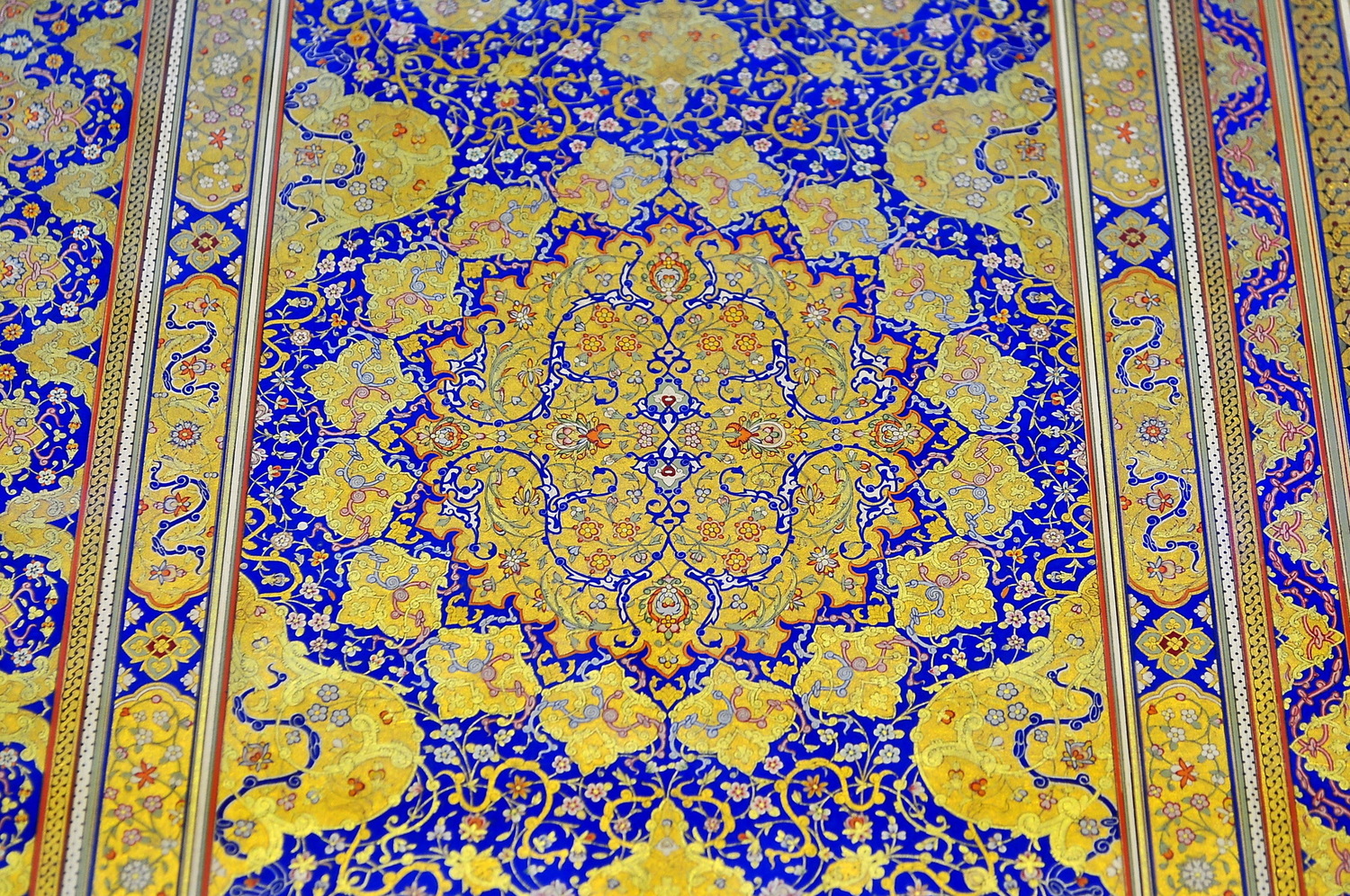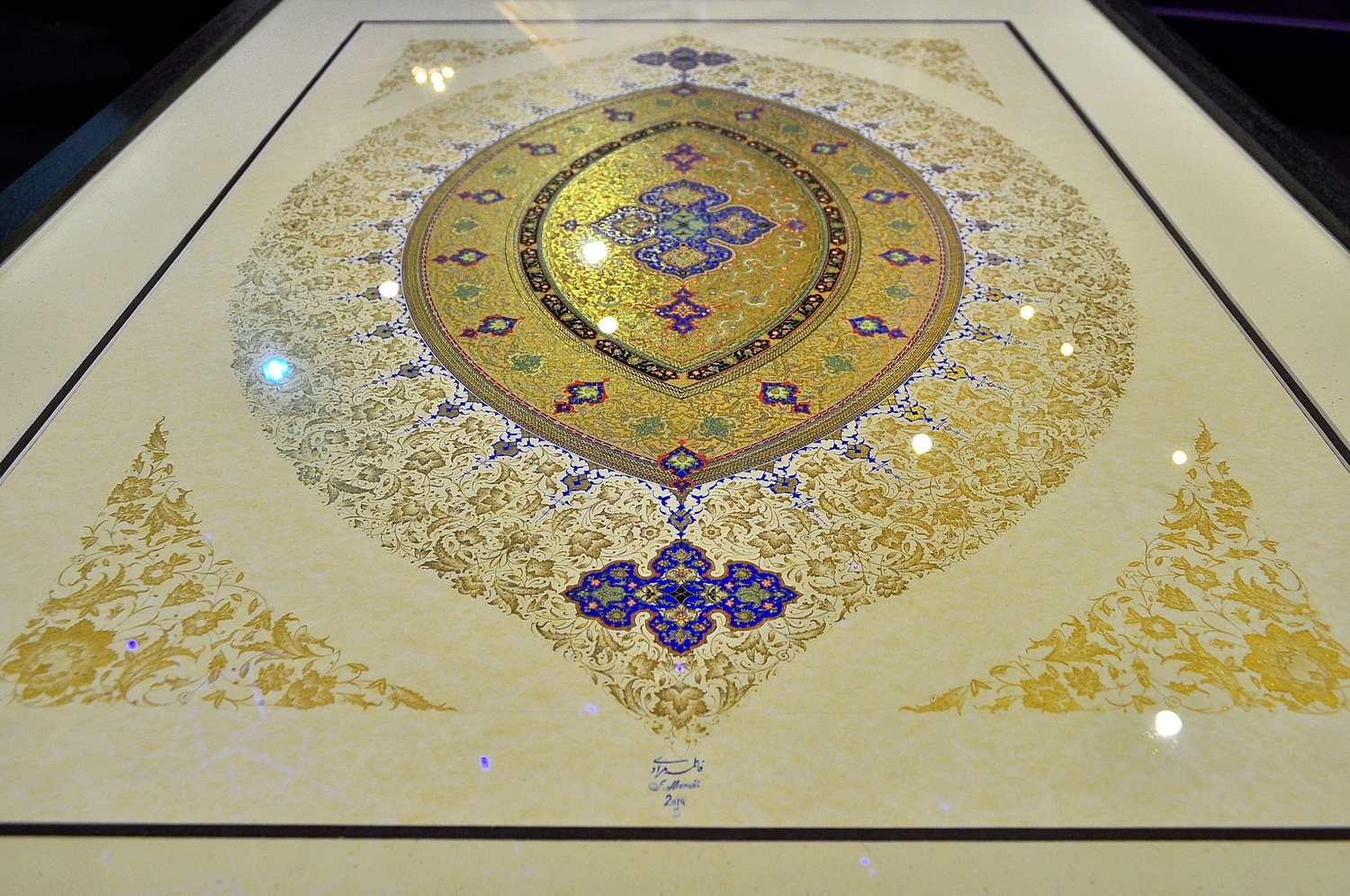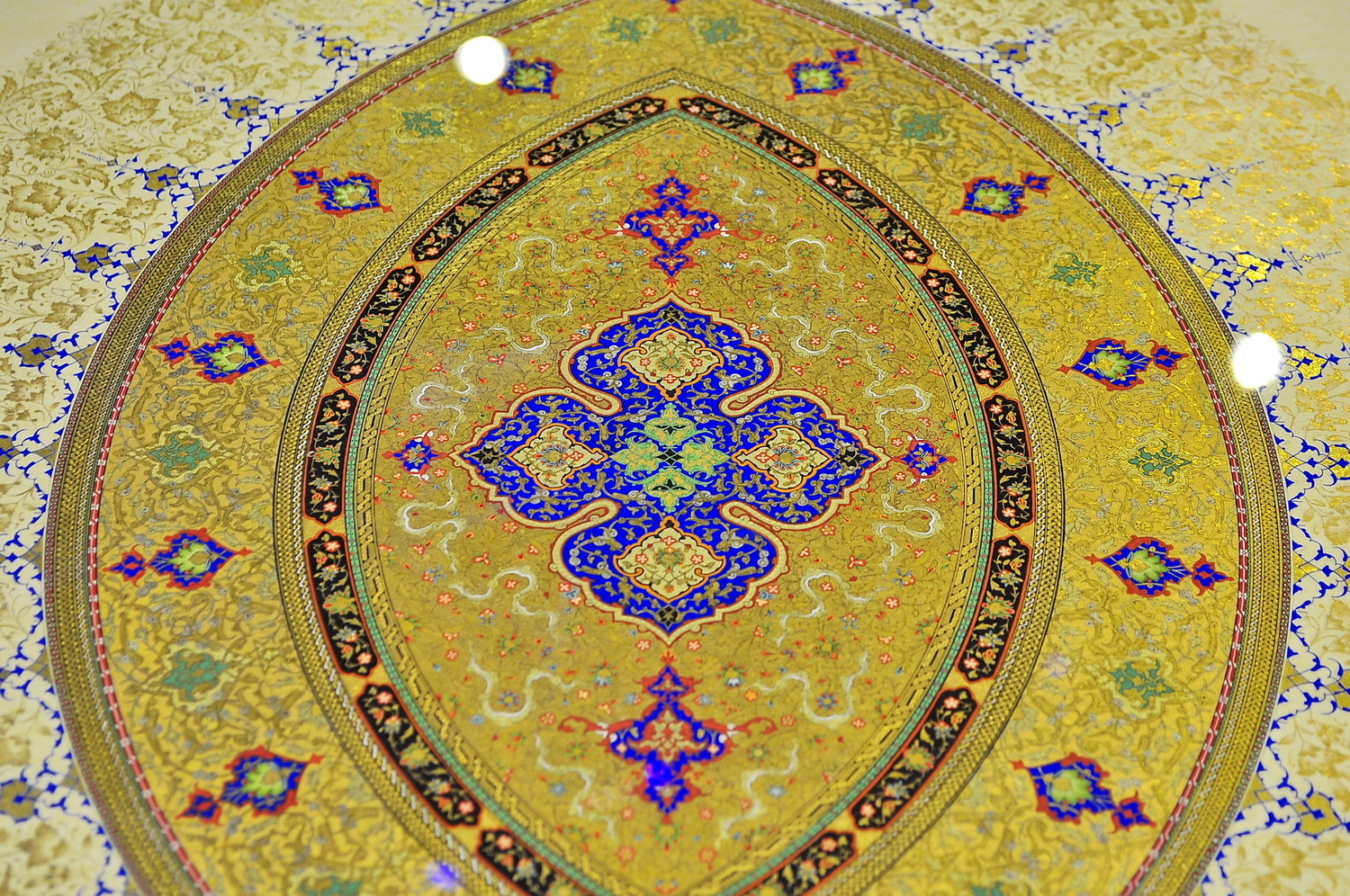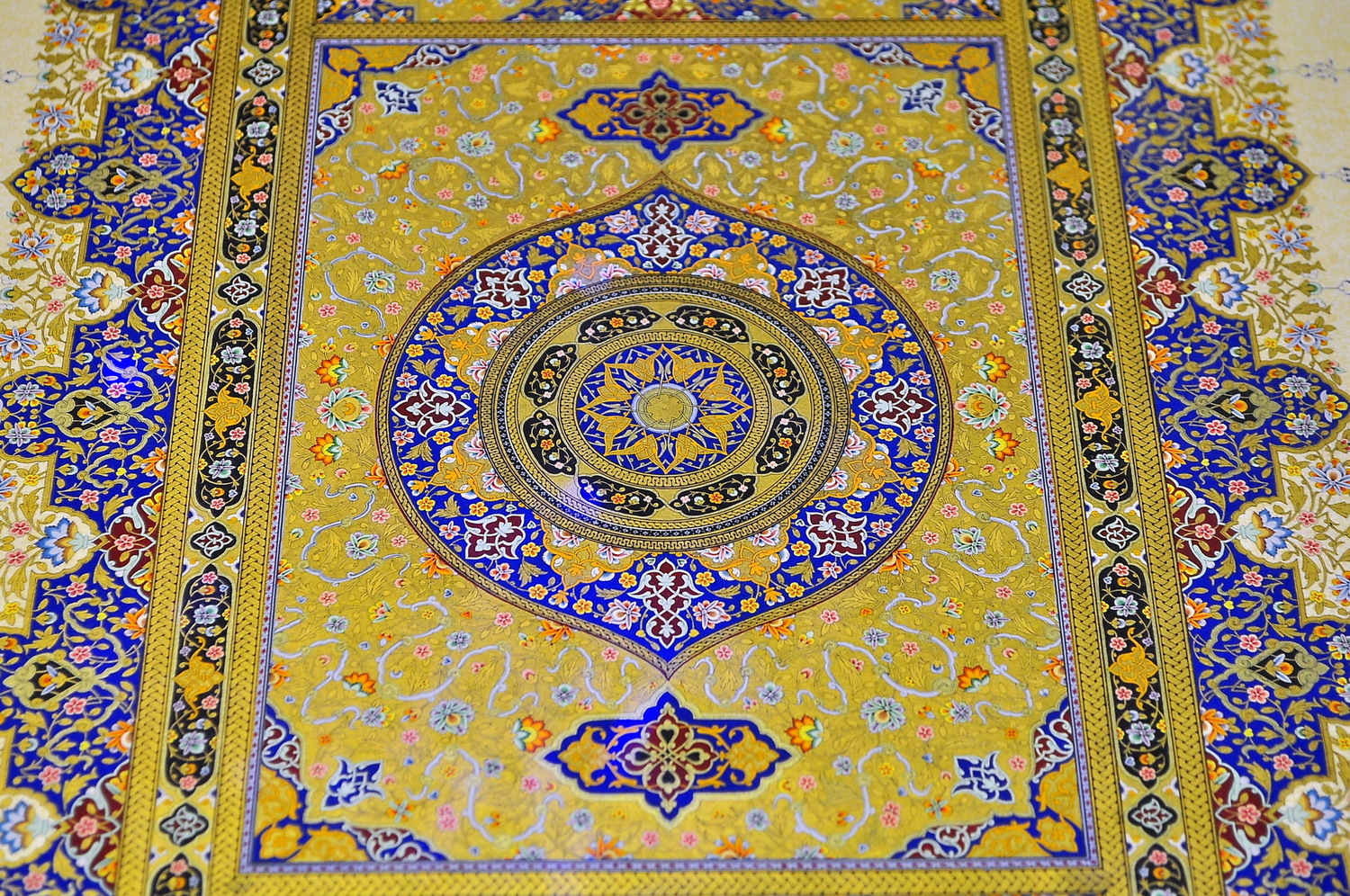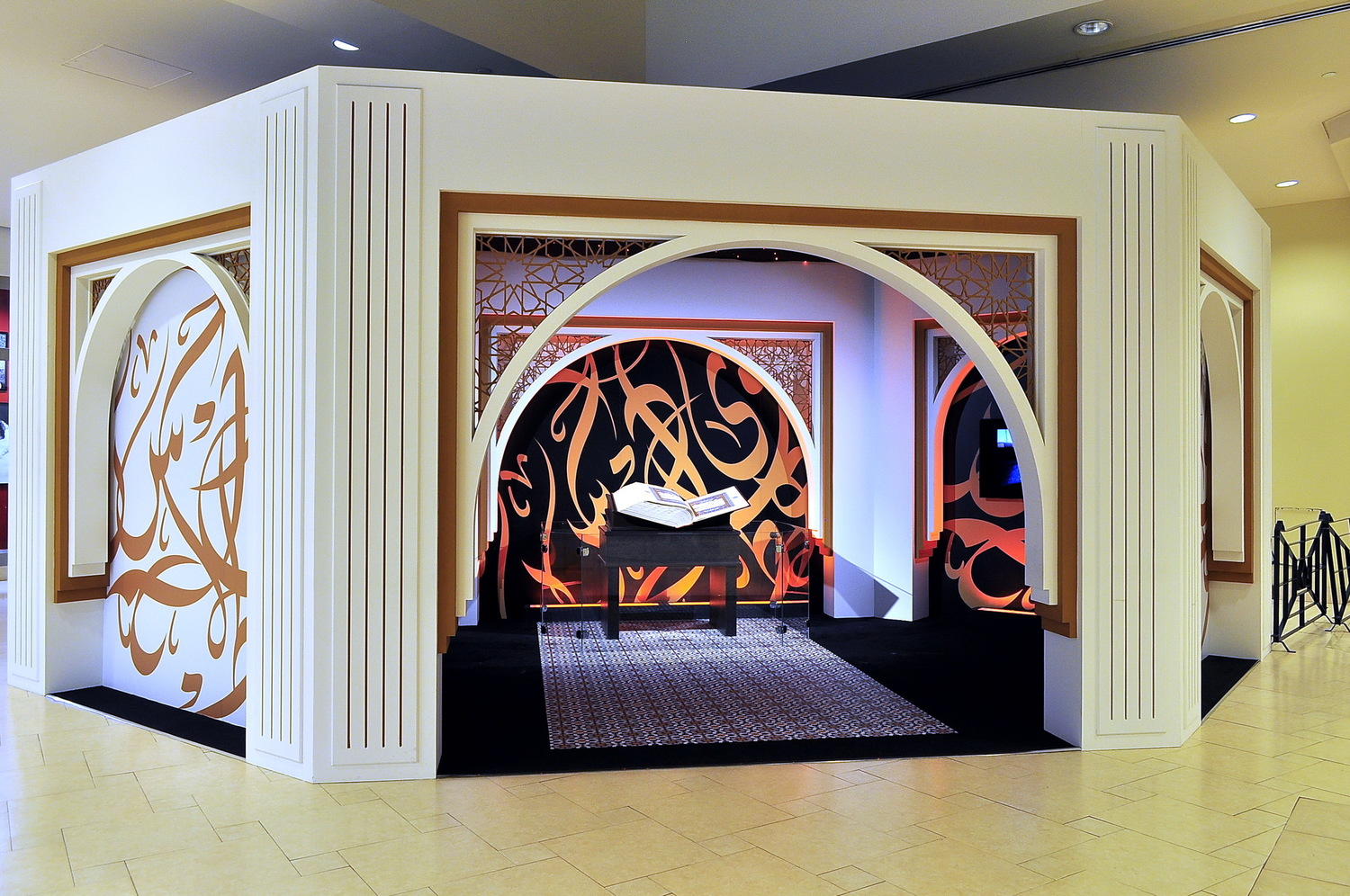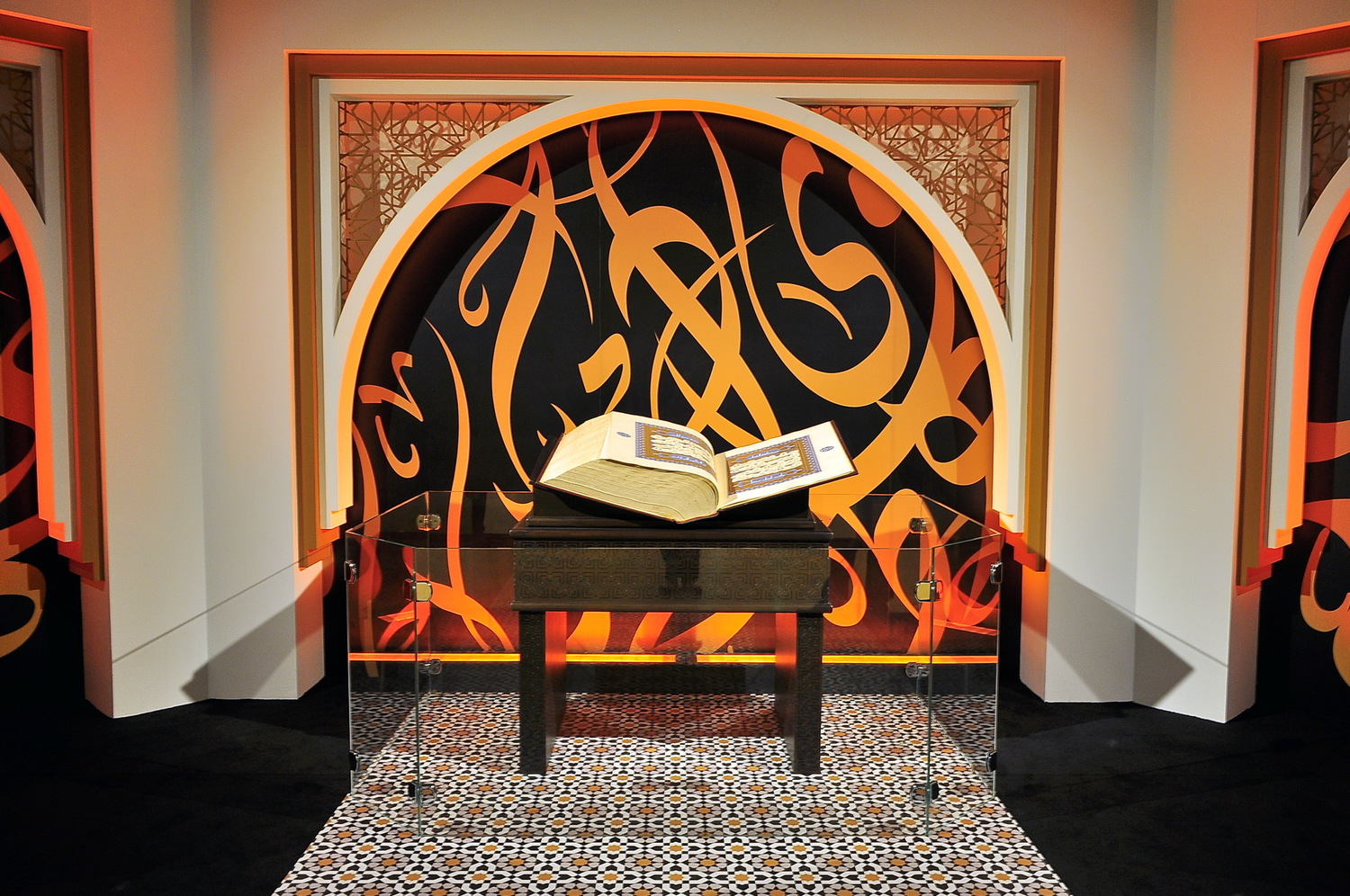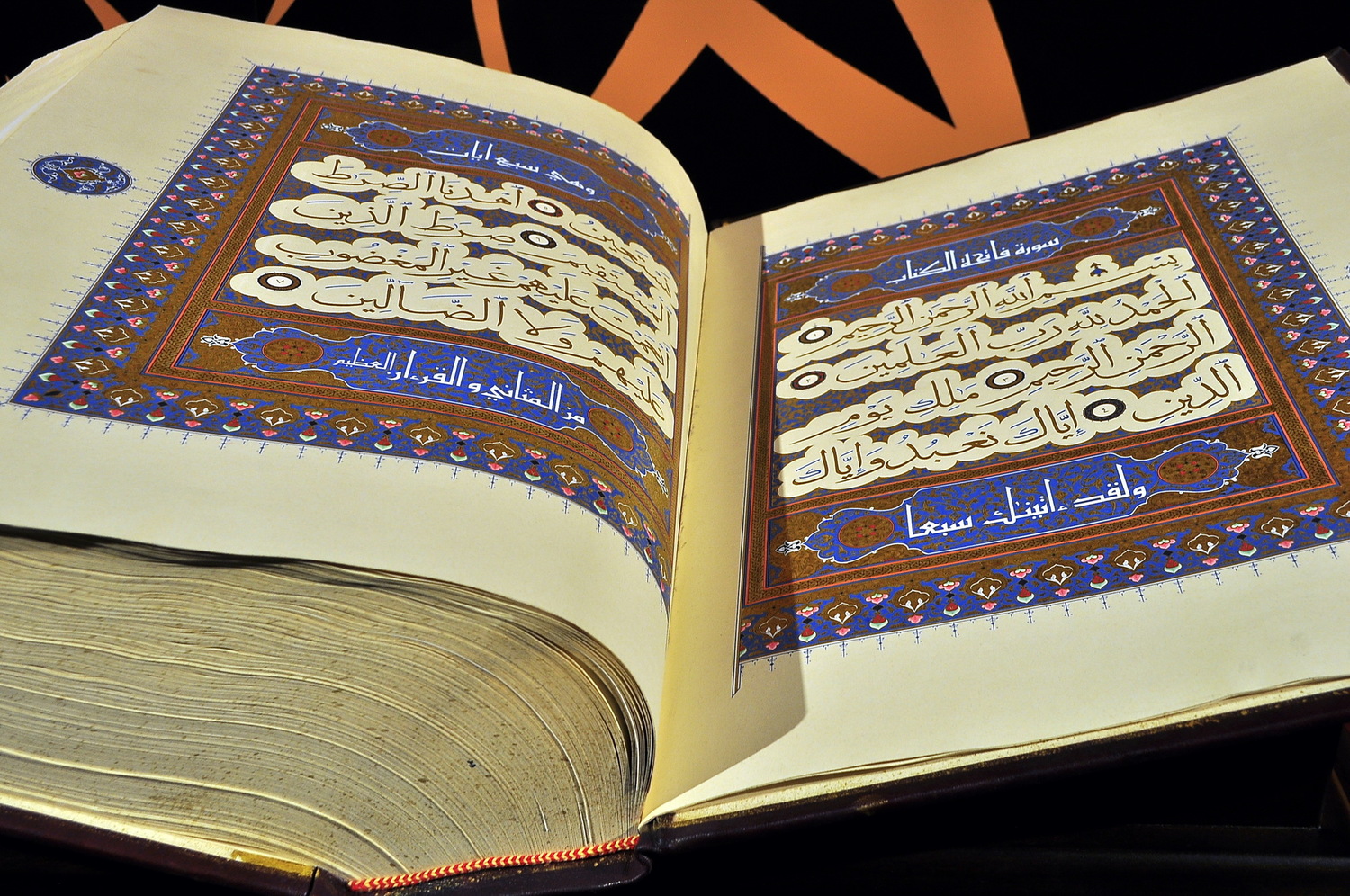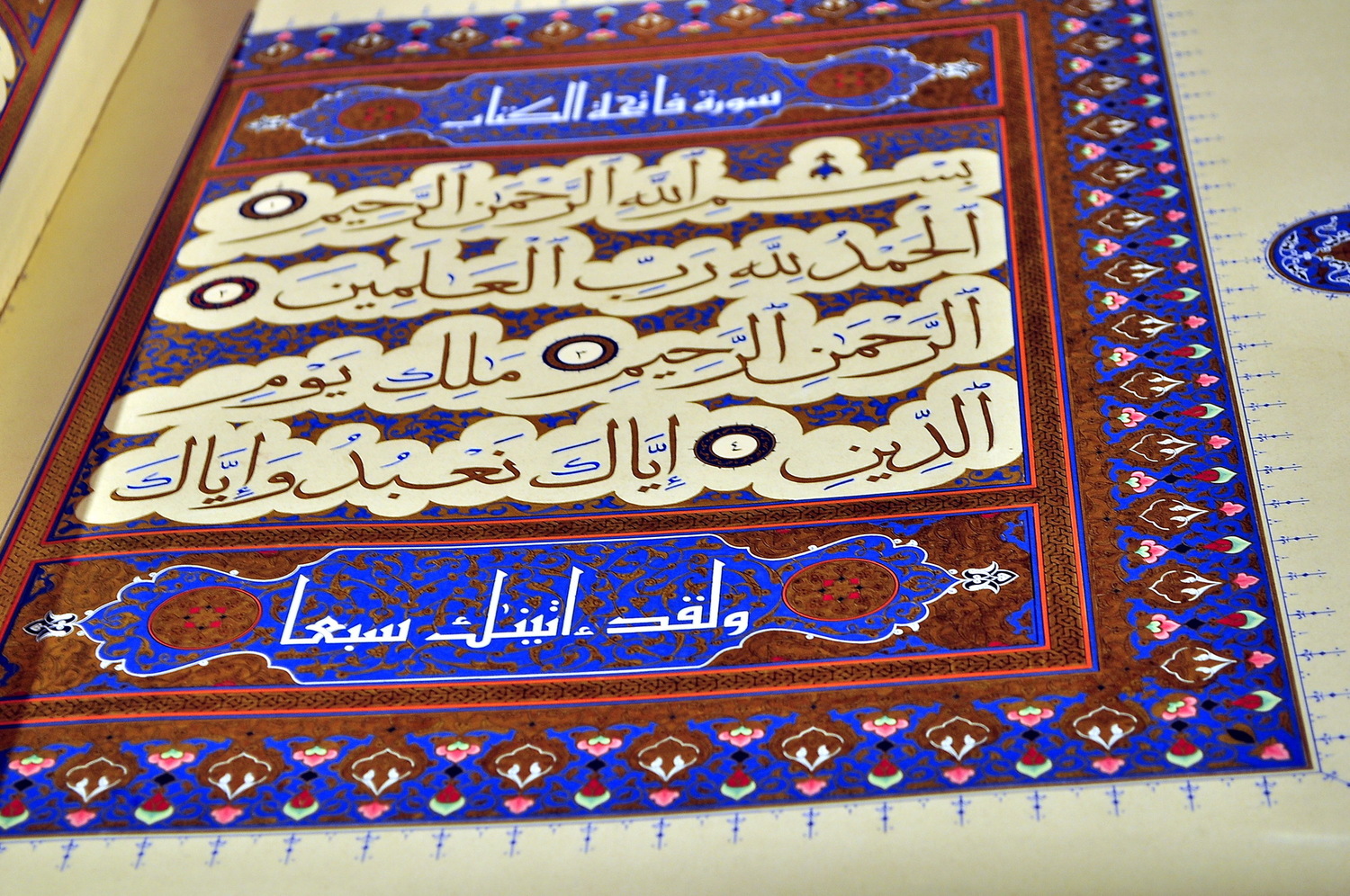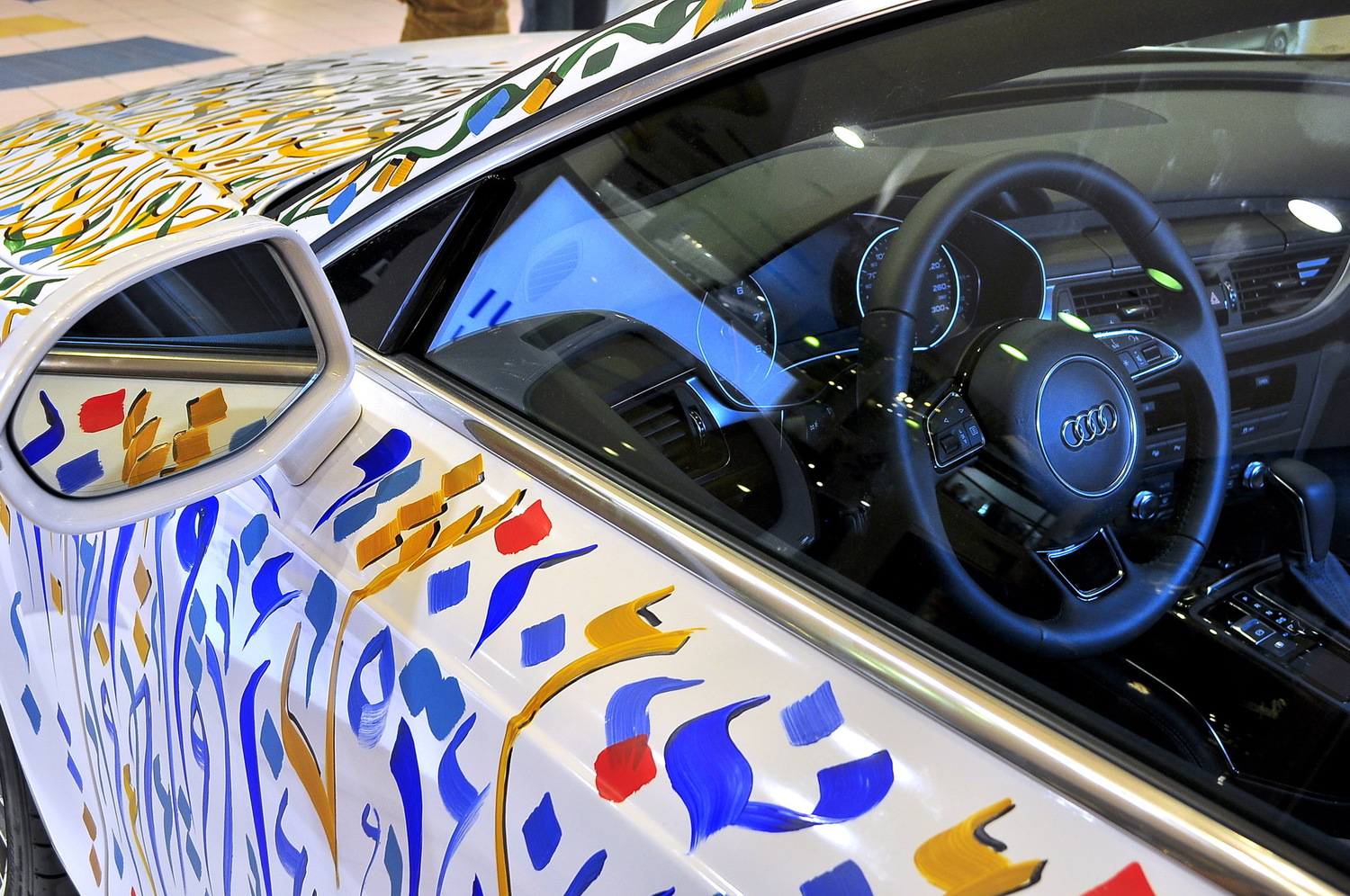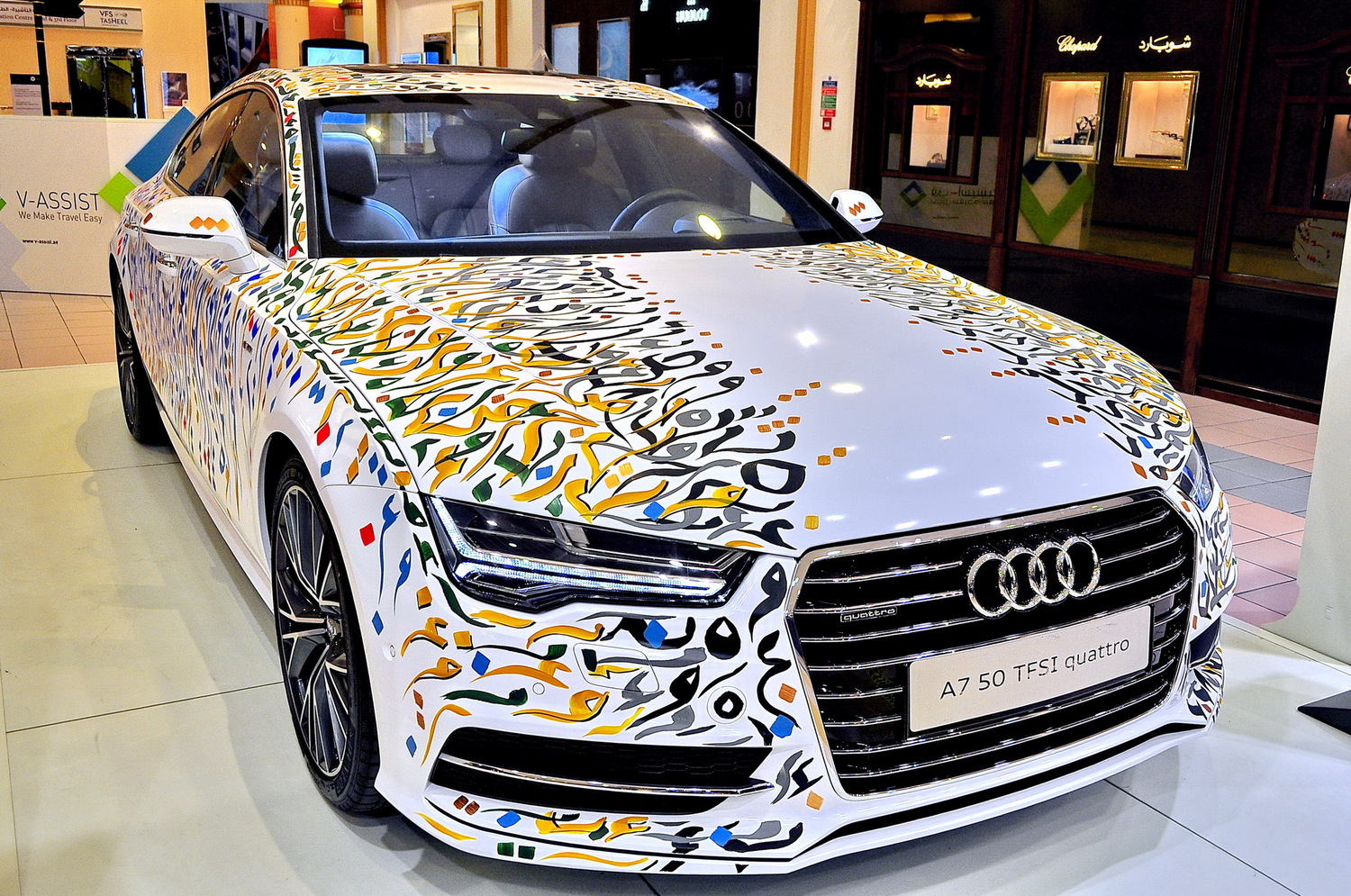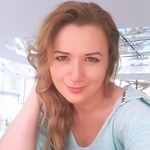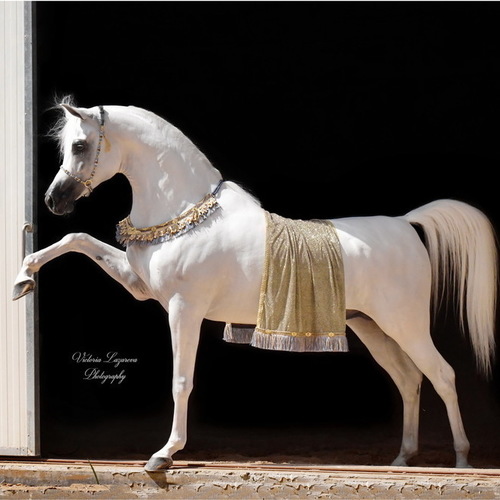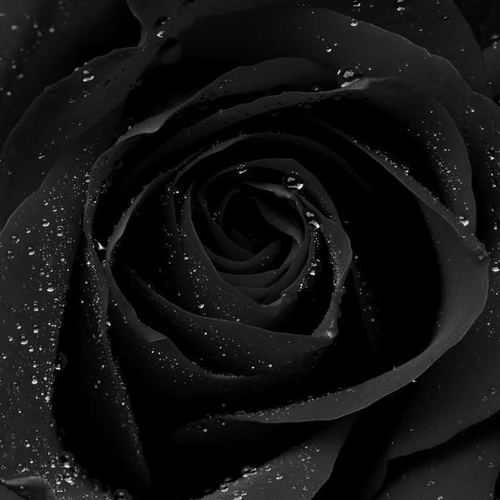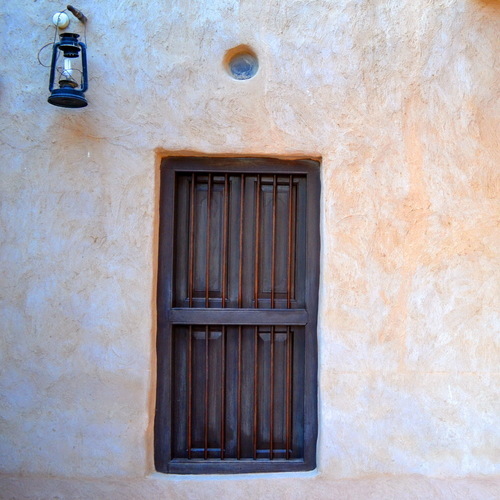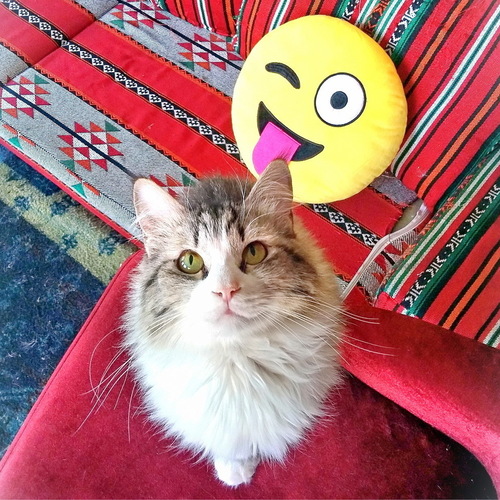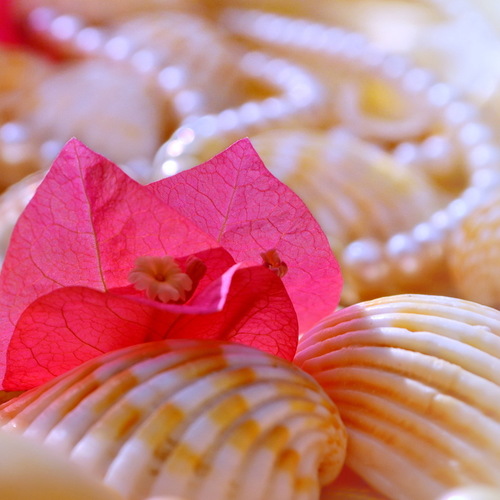Dubai Art-Season. Calligraphy, arabesques, illuminations
All-round shining abundance is going on the back burner and your soul starts crying for something more sophisticated, distinguished and intellectual. And you as a spoiled brat are looking perplexedly at Sir Dubai questioning: "Is there anything special, cultural and sophisticated you have?"
And the mega-city is nodding back: “Of course I have and a lot!” Both Dubai and other Emirates cultural program is getting more and more extensive and better. Even if you are far from the World of Art every now and again you can be captured by a sophisticated art- installation on the beach, in the park or in a mall.
Dubai cultural life is both The Art week and The Design Days Dubai or 3D otherwise. It is both The Gulf Film Festival and The Dubai International Film Festival. They are both Photo Art Weeks involving workshops and Classical Musicales as well.
Since 2014 The Dubai Culture & Arts Authority has made a decision of City Cultural program auditioning with Dubai Art Season.
- © Victoria Lazareva, feelingthelife.com
Dubai International Exhibition of Arabic Calligraphy
Dubai International Exhibition of Arabic Calligraphy taking place in the WAFI Mall can be called a pearl of great worth of Dubai Art Season.
Labyrinth purplish black walls forming DUBAI famous logo are decorated with the best calligraphers’ works. Here are some of the authors: Ali Omar Ermes, Rachid Koraichi, Narjes Noureddine, Ihab Ibraheem Ahmed Thabet, Noah Al Hamad, Sabah Al Arbili, Mohamed Deeb Galol...
Right here in the art-labyrinth Islamic illuminations of an amazing complexity and beauty are cased in glass
(the majority of them are form Sheikh Nahyan bin Mubarak Al Nahyan’s, the Head of the United Arab Emirates Ministry of Culture, collection - www.burda.ae/en).
Some authors of illuminations: Shokran Sadeklo, Emine Burcin Yilmaz, Mohammad Nabati, Laila Brzkr Yar Mohamdi, Nihal Tezcan, Mihriban Krcarslan, Zaynab Rahnama, Fatima Moradi, Laila Abbasi...
These illuminations are so great that they are worth being written separately. Meanwhile we are walking, admiring and familiarizing ourselves.
- © Victoria Lazareva, feelingthelife.com
- © Victoria Lazareva, feelingthelife.com
- © Victoria Lazareva, feelingthelife.com
- © Victoria Lazareva, feelingthelife.com
- © Victoria Lazareva, feelingthelife.com
- © Victoria Lazareva, feelingthelife.com
- © Victoria Lazareva, feelingthelife.com
Local curator-ladies explain that if you move your smart-phone closer to any exhibit you can see the whole schemer about this art-object on your screen: creation year, authorship and other details.
Besides there are modern sensor stands installed near the art-labyrinth entrance: you can familiarize yourself with all the exhibits shown, having thumbed digital museum pages.
In the photo – the illumination of a Turkish paintress Nilufer Kurfeyz.
- © Victoria Lazareva, feelingthelife.com
- © Victoria Lazareva, feelingthelife.com
- © Victoria Lazareva, feelingthelife.com
- © Victoria Lazareva, feelingthelife.com
Telling the truth visiting this exhibition for the first time I didn’t know the material well enough. Of cause the phrase “Calligraphy is the most noble of the Fine Arts” was on the tip of my tongue. In addition I started remembering something about orient ornament origin. But it was not enough.
Having come home I soaked myself in all Arabic calligraphy and pattern ins and outs. I will do my best to summarize all in all from what I have drawn upon.
The first and foremost is: every Islamic art detail comes laden with sacred meaning. For example, calligraphy is not just beautifully inscribed letters. Mainly Arabic writing system was made to write down Allah’s epistles to people on the Earth by Muhammad (before writing system invention all Quranic texts were just being told.) That made the Arabs treat calligraphy so reverently – The Quran is written by means of it.
The Quran prohibits to picture morally significant creatures. An artist may paint a man, an animal or a bird. But on Qiyamah (the Day of the Lord) he will have to ensoul what he has created and to suffer from the created by him.
That’s why you can hardly see artworks of people or animals in classical Islamic art. But you will be surprised to see the abundance of floral and plant patterns, the most complicated geometrical structures and numerous styles of calligraphic inscriptions - coded messages, the Quran extracts or Hadiths.
- © Victoria Lazareva, feelingthelife.com
- © Victoria Lazareva, feelingthelife.com
- © Victoria Lazareva, feelingthelife.com
- © Victoria Lazareva, feelingthelife.com
- © Victoria Lazareva, feelingthelife.com
- © Victoria Lazareva, feelingthelife.com
- © Victoria Lazareva, feelingthelife.com
- © Victoria Lazareva, feelingthelife.com
- © Victoria Lazareva, feelingthelife.com
- © Victoria Lazareva, feelingthelife.com
- © Victoria Lazareva, feelingthelife.com
The basis of any calligraphic inscription is strict geometric principles and clear proportions that’s what an inscription acutance and line beauty depend on.
The basis of a proportion is the size of the letter “Aleph”, the first letter of the Arabic alphabet which is straight vertical line.
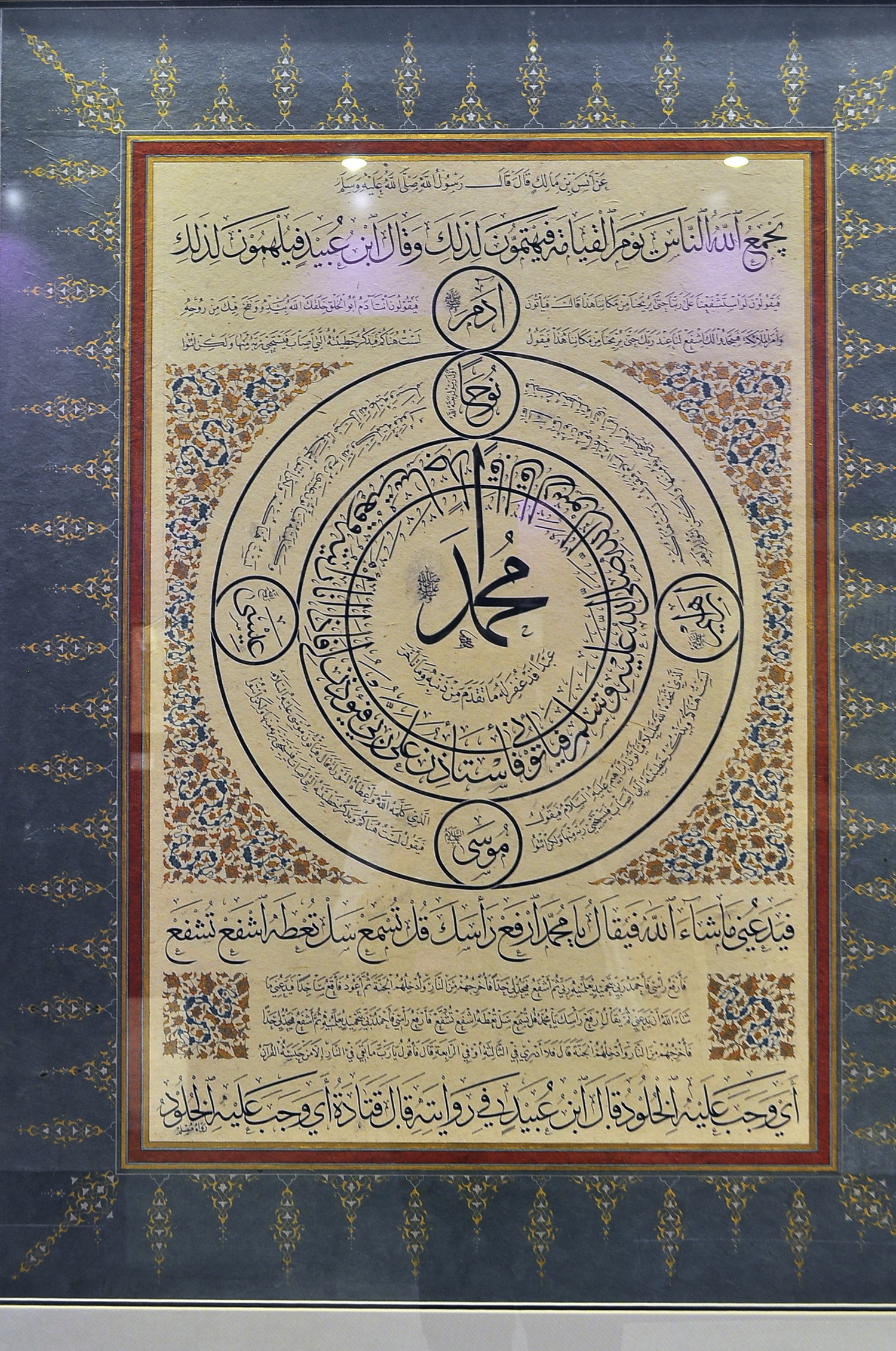
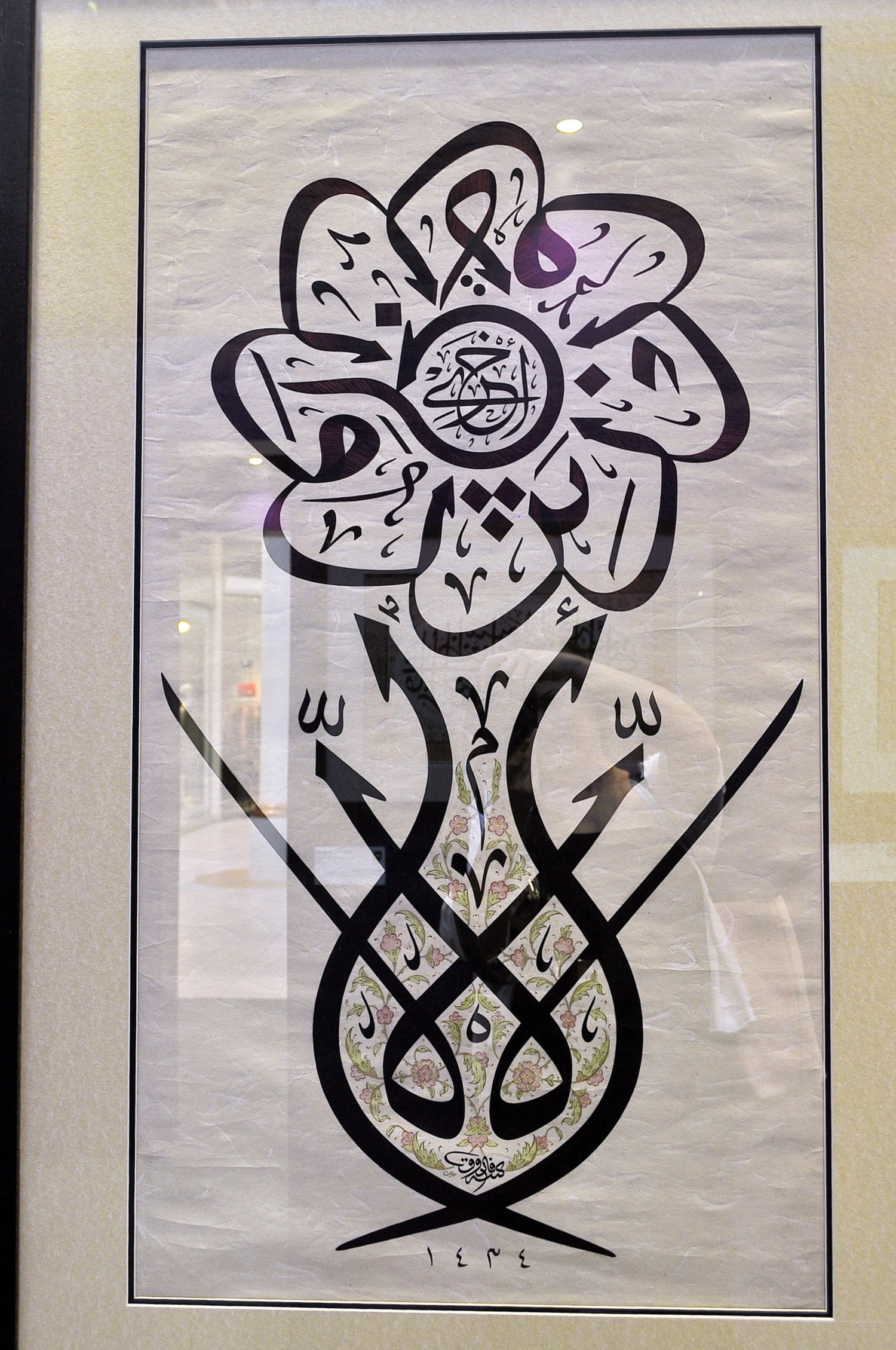
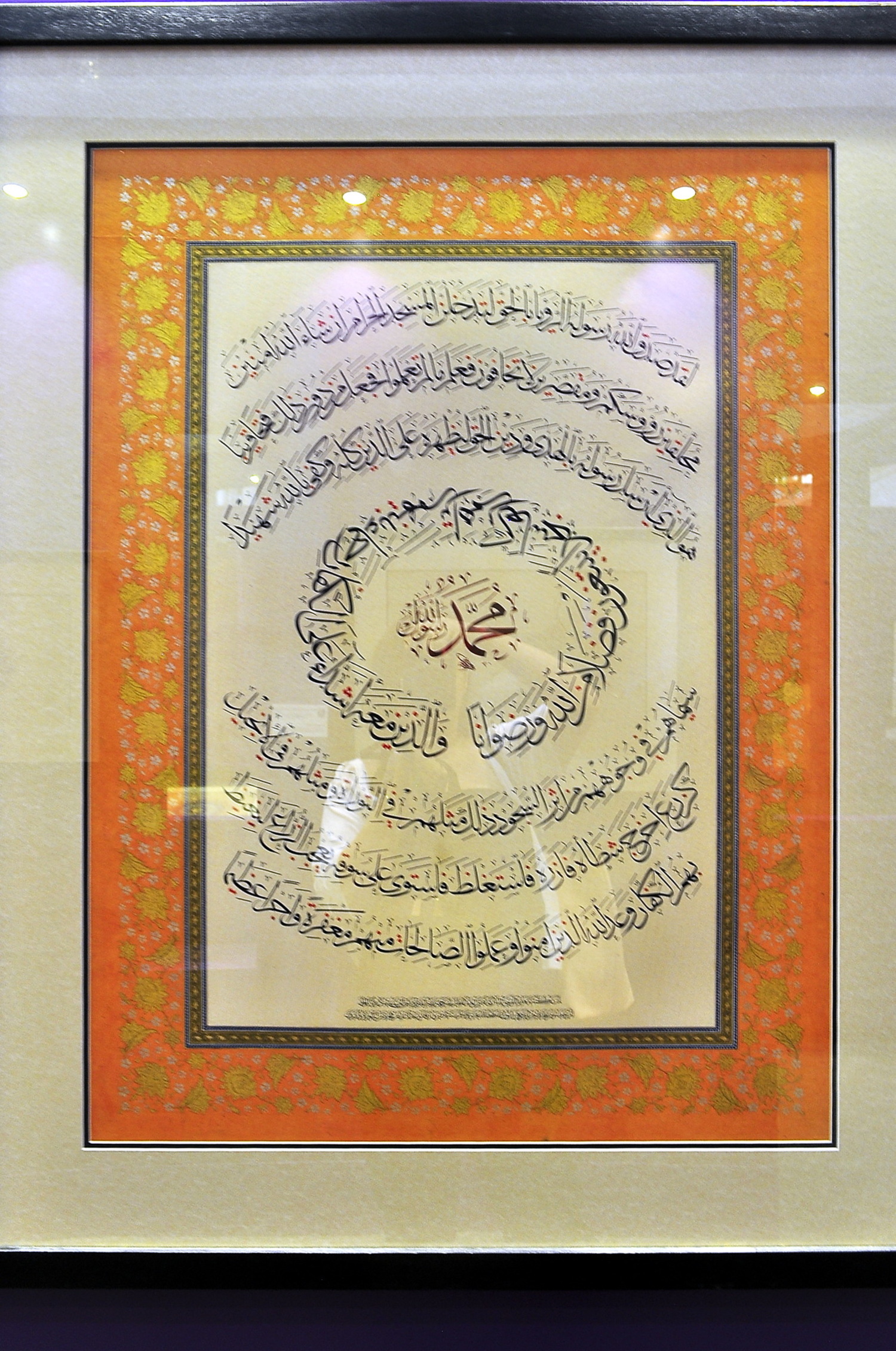
Any ornament is always a pictorial puzzle, a coded message. First of all it indicates the idea of unity and diversity of worlds under one sky, the Maker.
Very often an orient pattern has an apparent or implicit circular - a symbol of justice.
The basis of any oriental pattern – the symmetry – is responsible for accuracy, harmony and shapeliness of it.
It can be paid attention that an oriental pattern often has neither beginning nor end - the pattern is closed in on itself. This artistical device is used to the best effect for infinity.
Arabesque (French arabesque – «Arabic») is a European mane of a complicated oriental pattern mainly consisting of geometrical, calligraphical and plant elements and it is made on the basis of exact mathematical calculation. Arabesque is based on one or several pattern pieces repetition or multiplication.
And here are some amazing Islamic illuminations mentioned above. I am not sure about the pictures but alive the freshness of colours fascinates. The exquisite workmanship: every flower and every petal are picked in. The patterns cycles on the lines of symmetry and along with this all flowers differ from each other.
"Illumination is a complicated technology for books, manuscripts and other valuable things decoration. Gilding starts any illumination followed by the paining itself: main colours putting and rough draft lines draughtsmanship followed by shades and darker colours. White overtones accomplish figures and space simulation".
- © Victoria Lazareva, feelingthelife.com
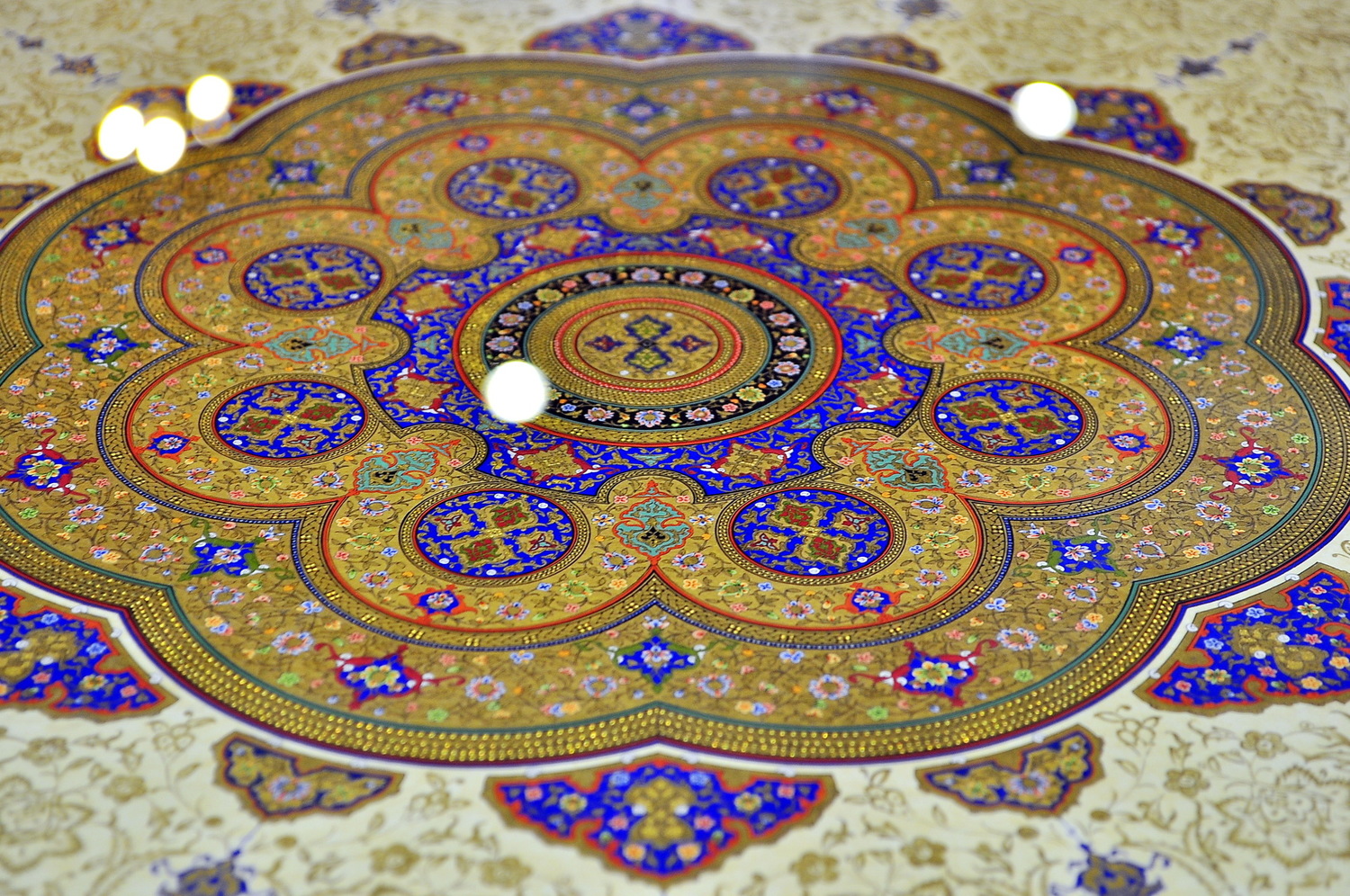 © Victoria Lazareva, feelingthelife.com
© Victoria Lazareva, feelingthelife.com- © Victoria Lazareva, feelingthelife.com
- © Victoria Lazareva, feelingthelife.com
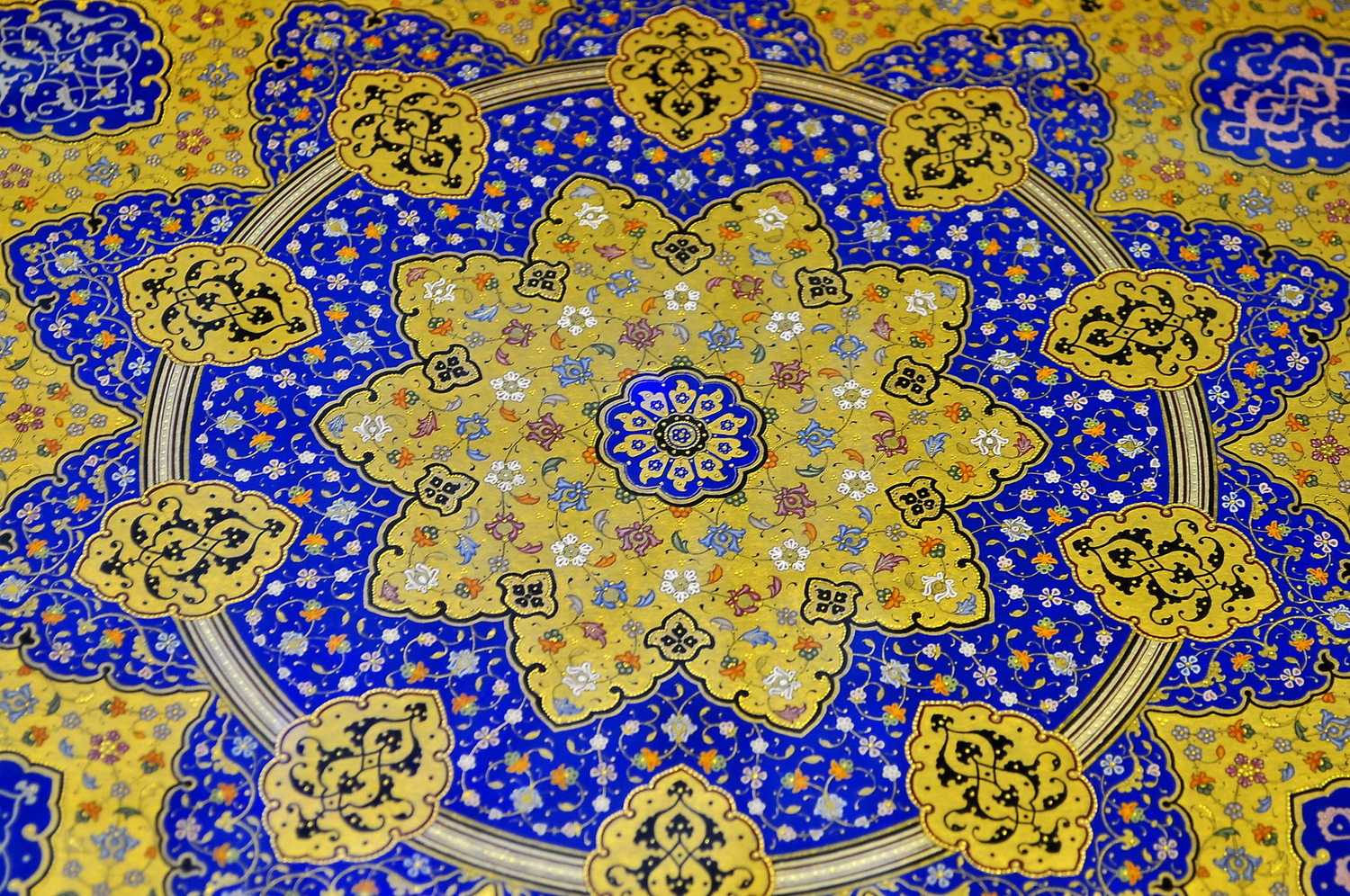 © Victoria Lazareva, feelingthelife.com
© Victoria Lazareva, feelingthelife.com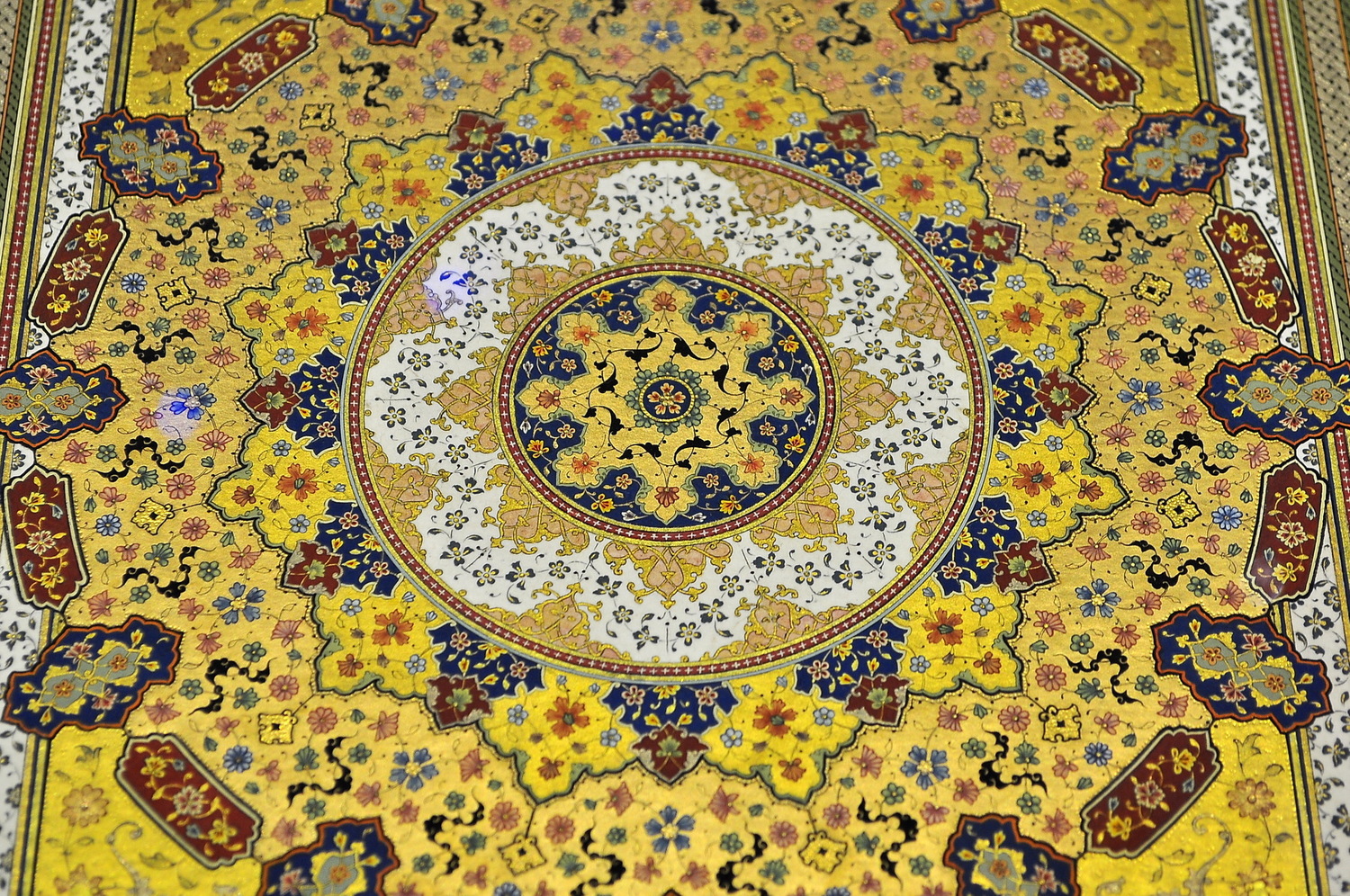 © Victoria Lazareva, feelingthelife.com
© Victoria Lazareva, feelingthelife.com- © Victoria Lazareva, feelingthelife.com
- © Victoria Lazareva, feelingthelife.com
- © Victoria Lazareva, feelingthelife.com
- © Victoria Lazareva, feelingthelife.com
- © Victoria Lazareva, feelingthelife.com
- © Victoria Lazareva, feelingthelife.com
- © Victoria Lazareva, feelingthelife.com
- © Victoria Lazareva, feelingthelife.com
- © Victoria Lazareva, feelingthelife.com
- © Victoria Lazareva, feelingthelife.com
- © Victoria Lazareva, feelingthelife.com
The second floor of the WAFI Mall hosts the second part of the Arabic calligraphy exhibition.
A small pavilion styled on traditional oriental canvas hit the eye immediately. At the back of it there is a huge, lavishly illustrated Quran. This precious book belonged to King Hussein bin Talal, the father of the current King of Jordan Abdullah II.
Usually only first pages of the Quran are decorated but in this case Jordanian artisans went to town on the whole book. While a unique handwritten copy was being created Maliki Islamic calligraphy style was being used.
Arabic calligraphy in the background of the canvas reminds of flame shapes in a home fire. It is both inextinguishable flame of hearts and soul light keeping alive by sage texts of the Quran.
- © Victoria Lazareva, feelingthelife.com
- © Victoria Lazareva, feelingthelife.com
- © Victoria Lazareva, feelingthelife.com
- © Victoria Lazareva, feelingthelife.com
The exhibition is full of small installations and workshops where you can listen to different lectures about traditional and contemporary calligraphy, Islamic art movements, orient ornament techniques and styles.
All the way around, there are a lot of interesting and cognitive things to see.
During my second visit the exhibits were sensed more meaningful.
P.S. A little of pop-art as a bonus
On the WAFI Mall first floor next to the art-labyrinth Audi 7 was showing itself (obviously Audi Group is a sponsor or a partner of the exhibition). The car was decorated with calligraphic inscriptions having converted this stylish automobile into an art-object.
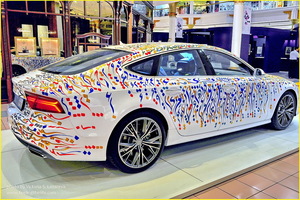
- © Victoria Lazareva, feelingthelife.com
- © Victoria Lazareva, feelingthelife.com
- © Victoria Lazareva, feelingthelife.com
